Shelburne Museum
Just a few miles south of Burlington, Vermont is an unexpected place called the Shelburne Museum. Founded in 1947 by a spirited (and arguably eccentric) heiress named Electra Havemeyer Webb, the “museum” is really a large 45-acre campus with nearly 40 buildings that house her “collection of collections.” The website calls it “beautiful, fascinating, and whimsical,” which I think describes it perfectly. I would also call it unique, approachable, and a little quirky (I love quirky).
We drove up on a Sunday with weather that couldn’t seem to make up its mind. Sunshine, clouds, and sprinkles of rain rotated haphazardly throughout the day. The one constant was cool temperatures, 55-60℉, which we hoped would persuade the trees to change their colors sooner rather than later. Fortunately, we stayed dry while walking around the extensive grounds of the museum.
The star of the show was the Ticonderoga, a paddle wheel passenger steamboat that had operated on Lake Champlain from 1906 to 1953. There it was, all 220 feet of it, sitting high and dry on the grass! The Ticonderoga’s interior had been restored, and we explored three of the four decks. It was fun to imagine being a passenger in 1923, strolling the elegantly carpeted Saloon Deck, and enjoying meals served on fine china in the dining room. The most amazing thing about Ticonderoga was the way it was moved from Lake Champlain to the museum grounds. From a video onboard, we learned that the 900-ton boat was moved via a custom railroad carriage, pulled (very slowly) by trucks on specially laid tracks. It was done in the the dead of winter so that the ground would be frozen solid, and it was so cold that fires had to be lit under the carriage to keep the oil that greased the wheels from freezing. The two mile journey took three months. It was an engineering feat that boggles the mind.
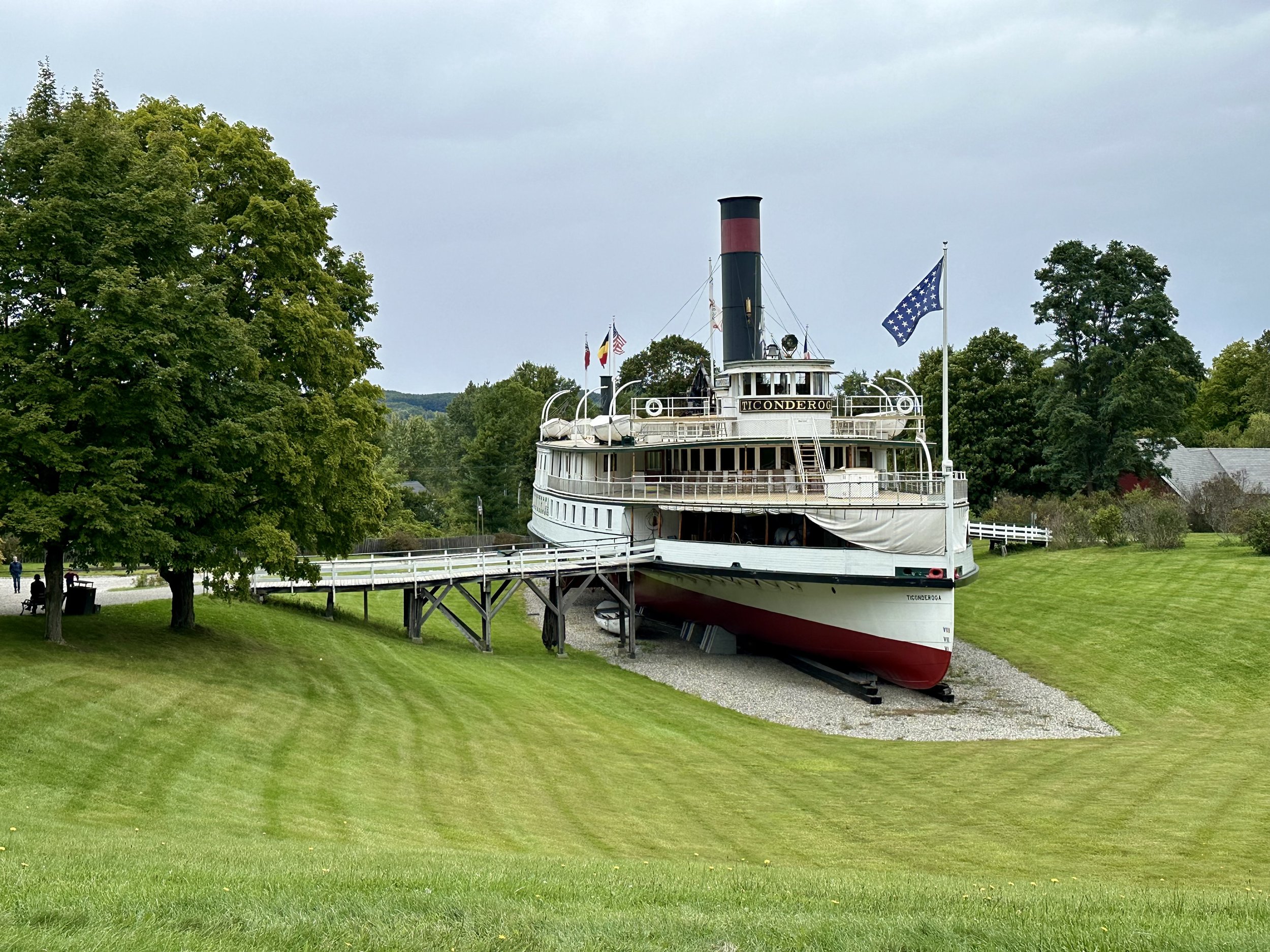
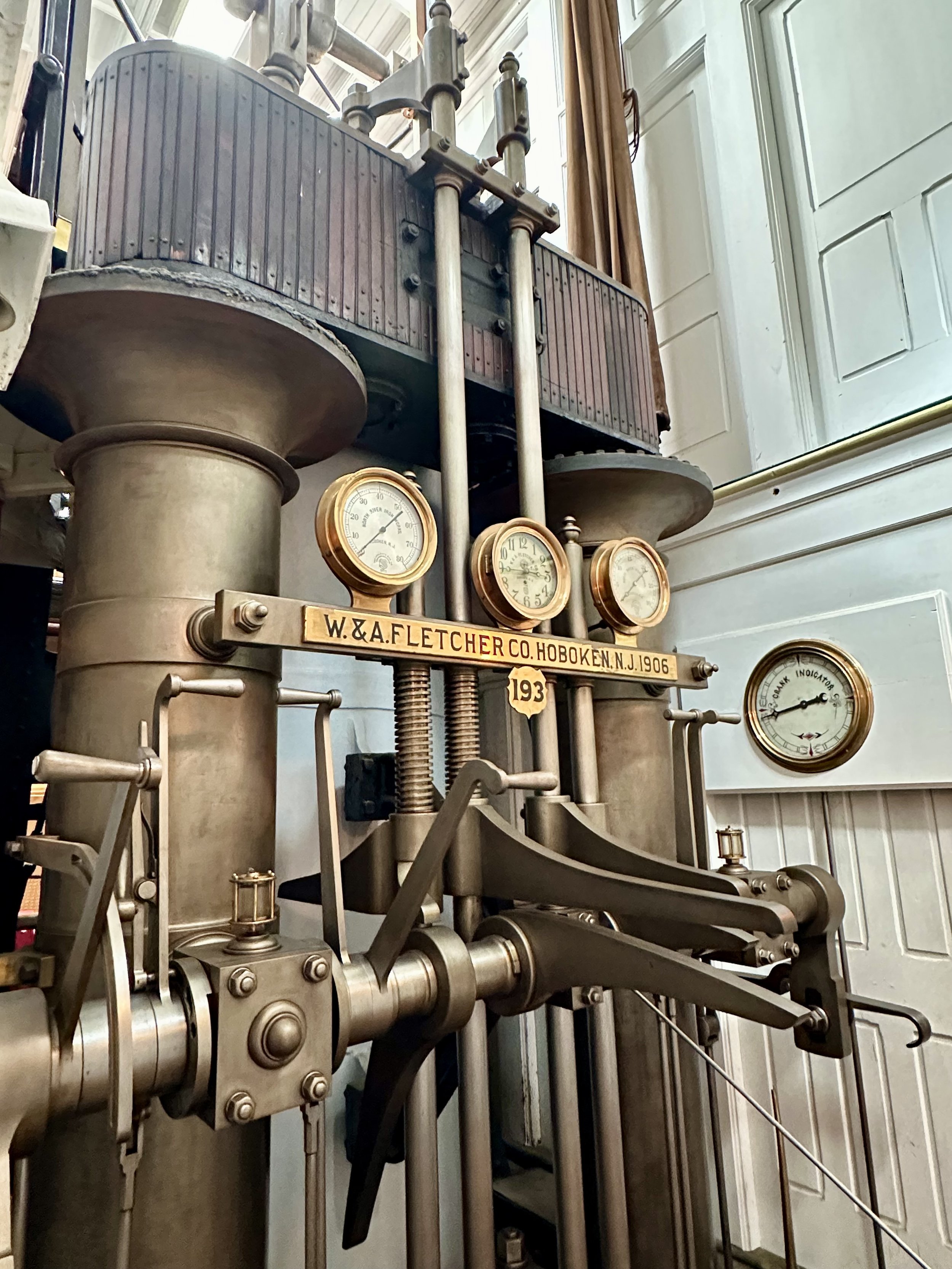
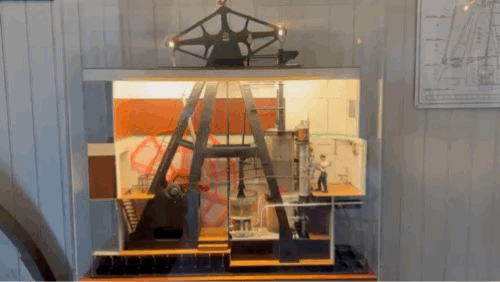
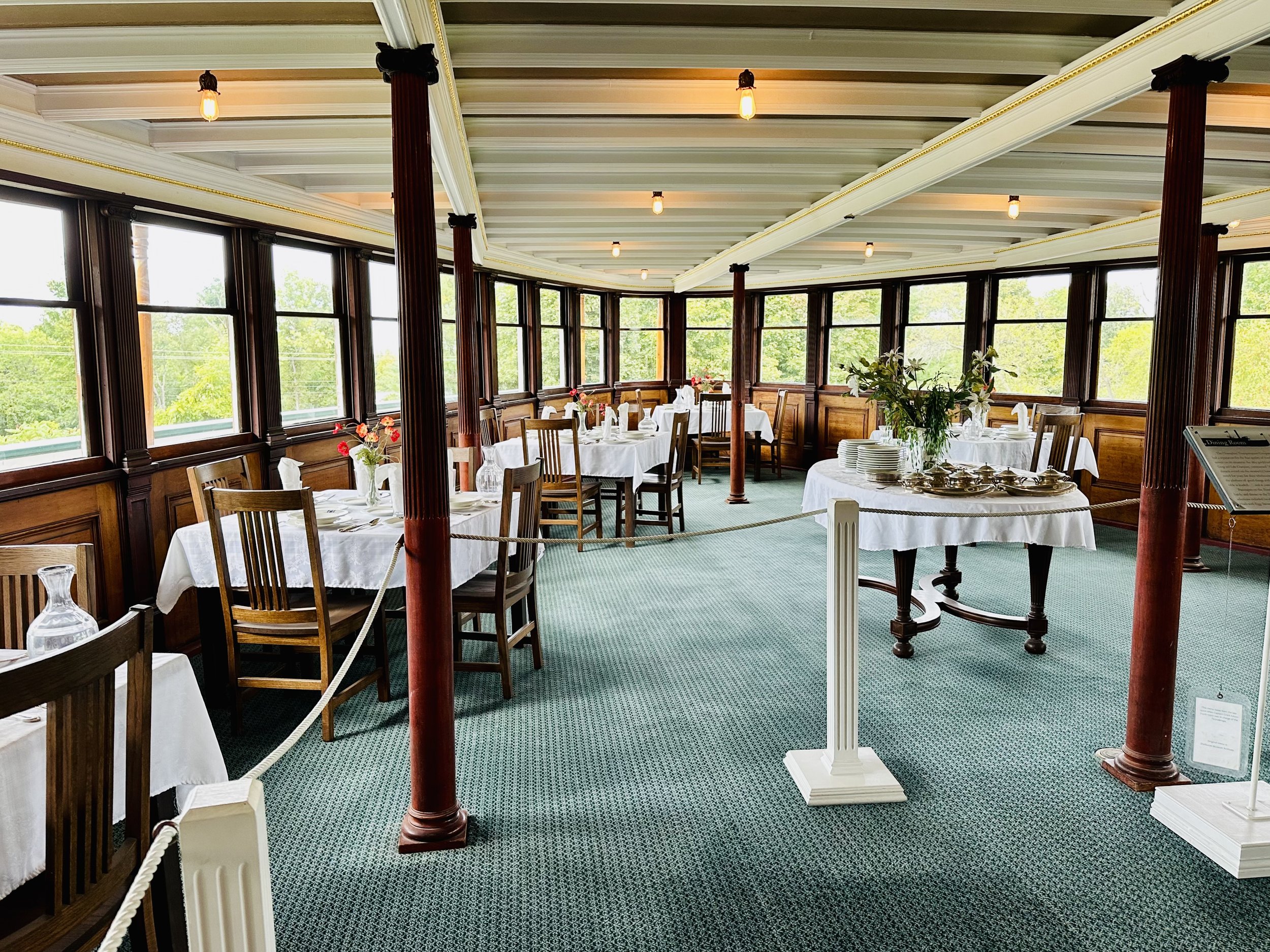
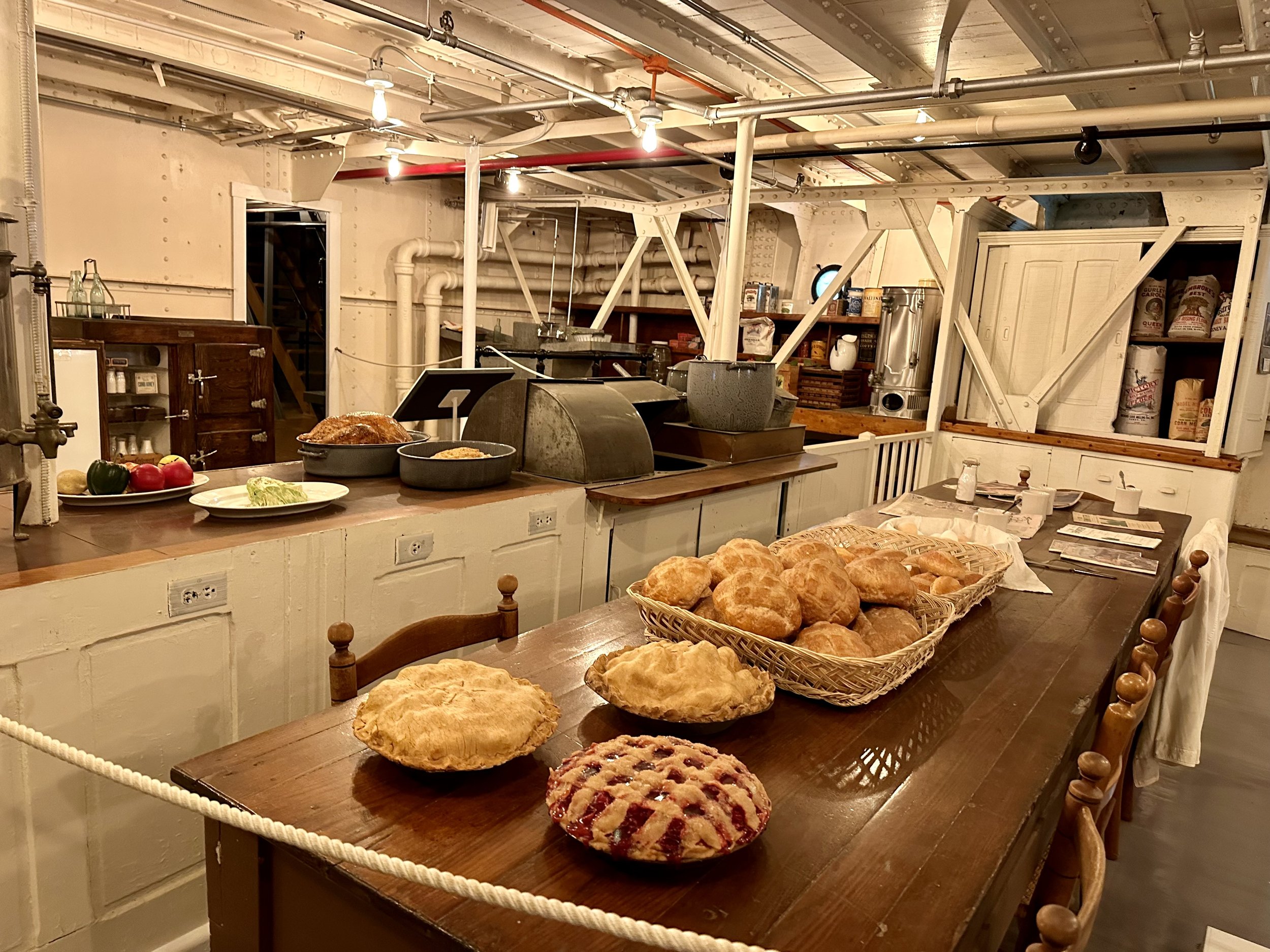

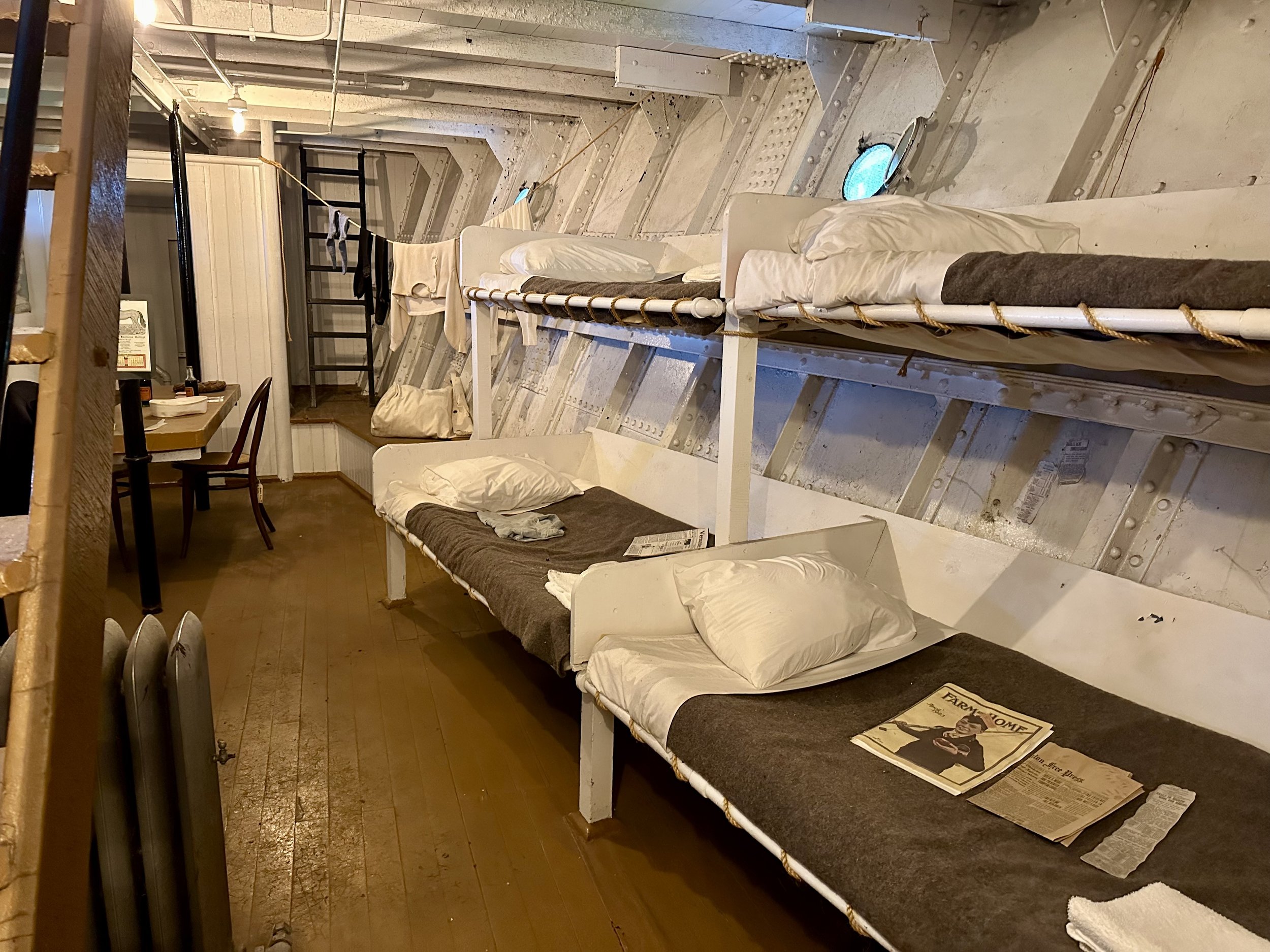
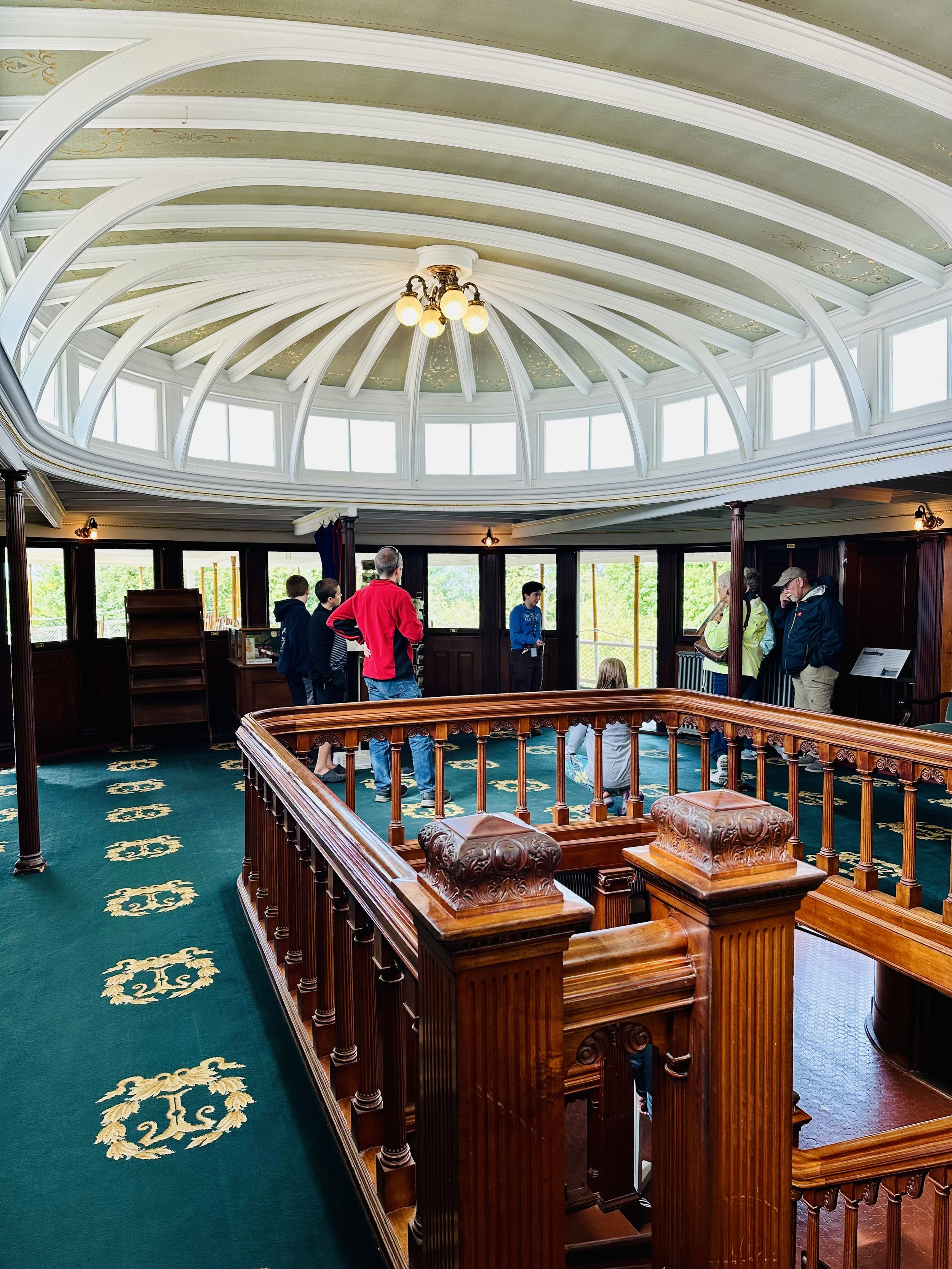
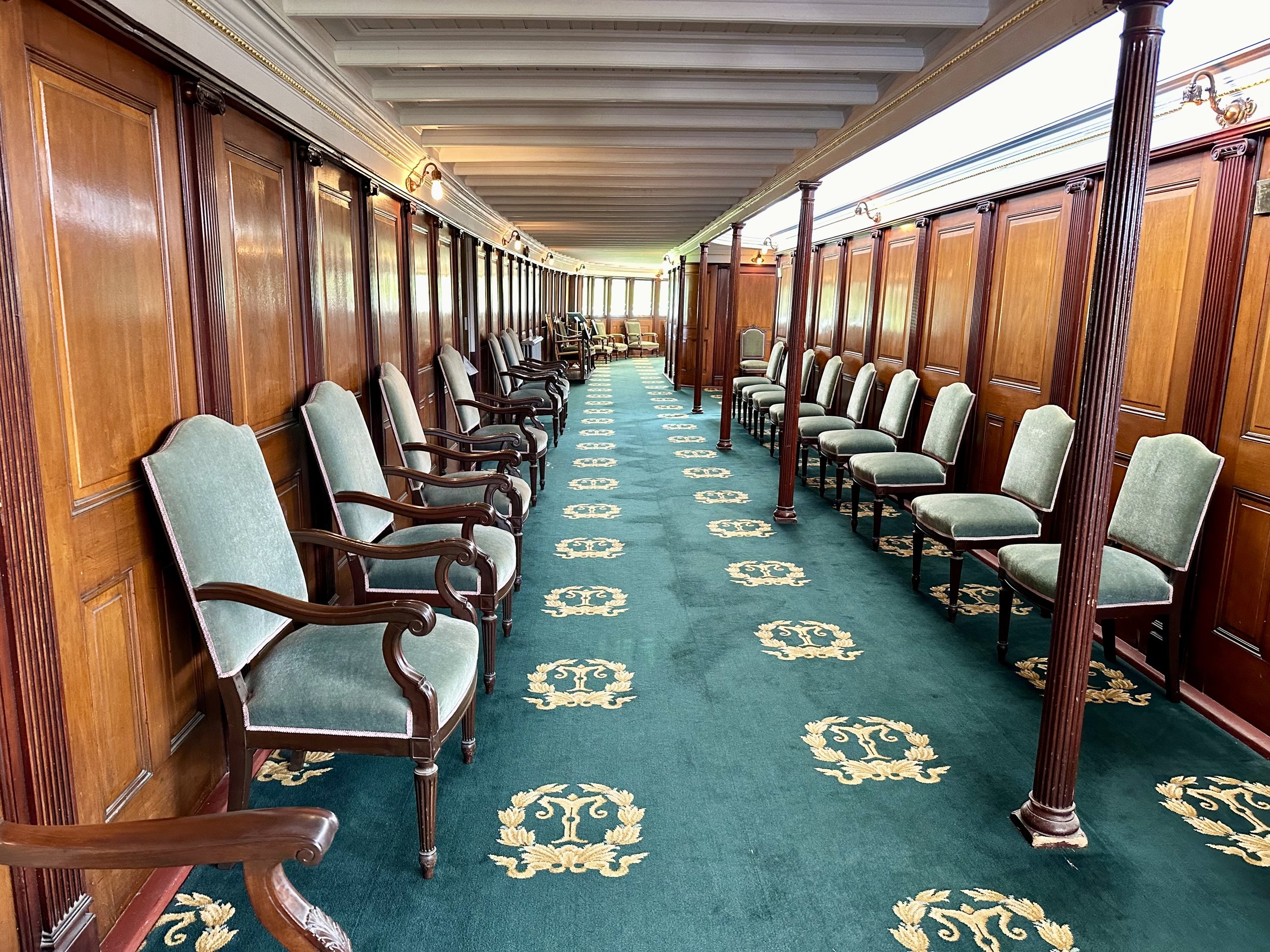
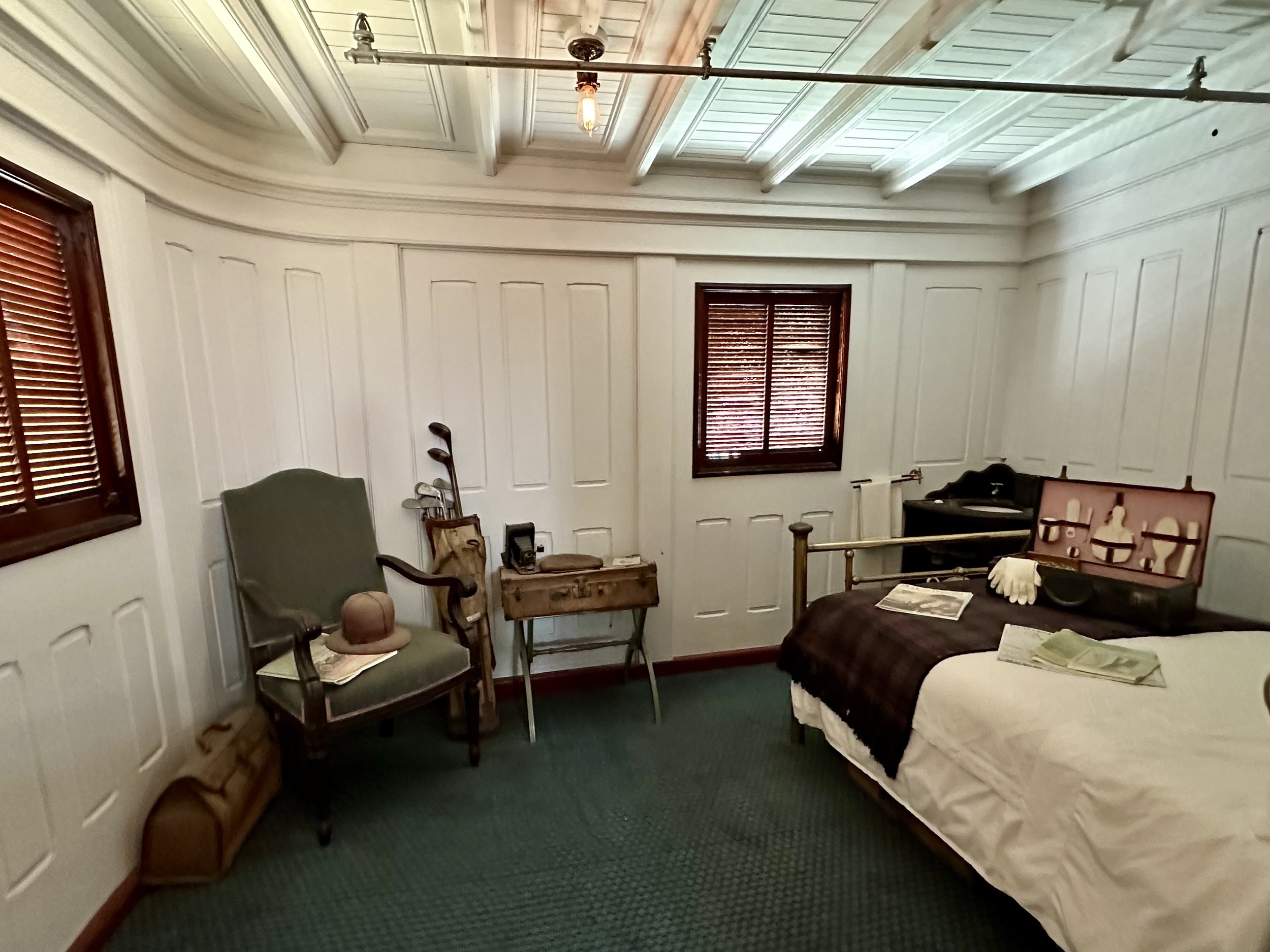
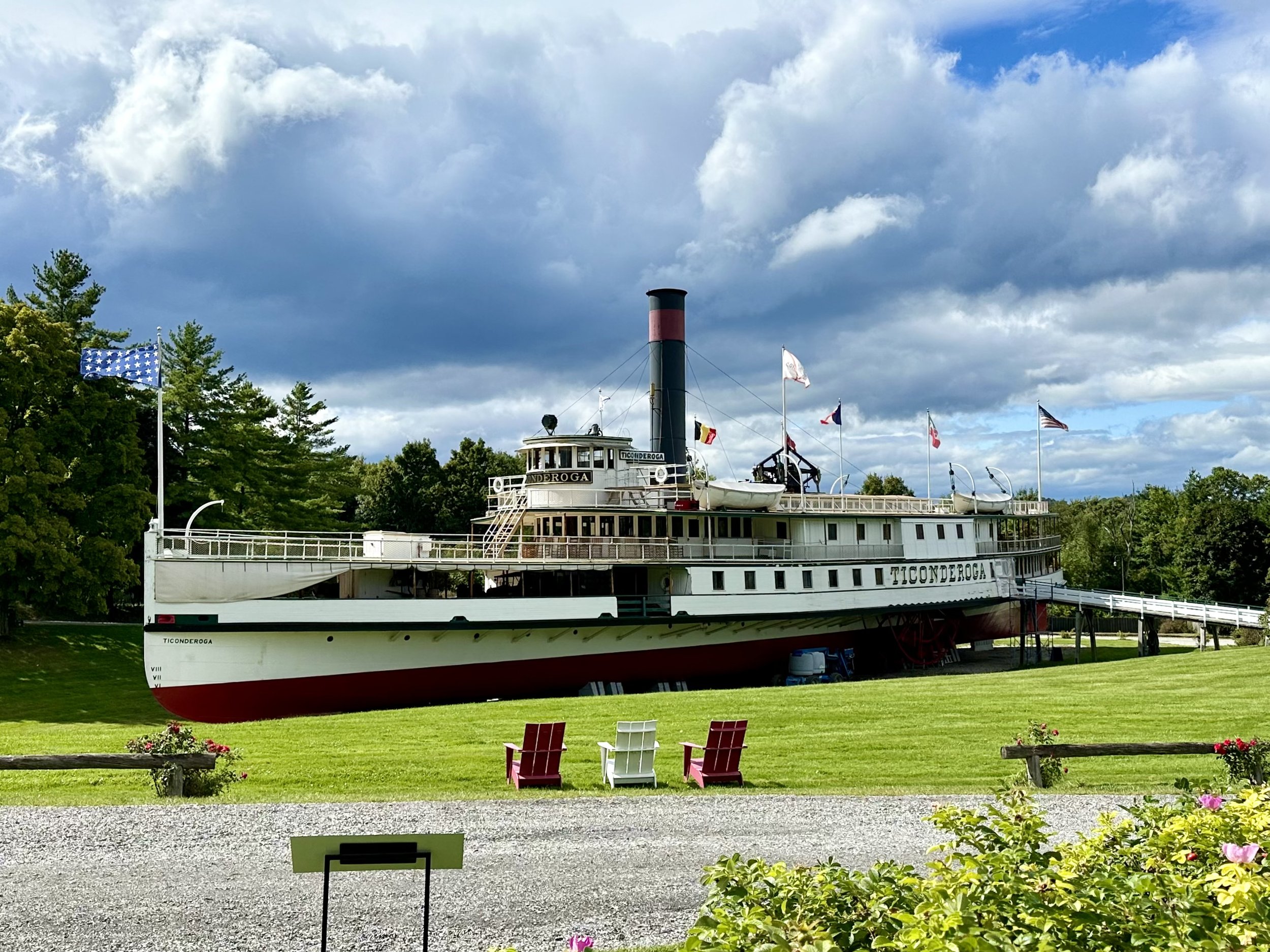
After Ticonderoga, we explored the rest of the grounds and the motley assortment of buildings. Many of them - houses, barns, even a lighthouse - had been moved there from other parts of New England, and had their own historical significance. A few buildings were constructed specifically to house Electra Webb’s collections. The buildings were widely spaced, connected by winding gravel pathways. There were cultivated gardens, an impressive covered bridge, towering apple trees, and expansive green lawns. It was a lovely place for walking.
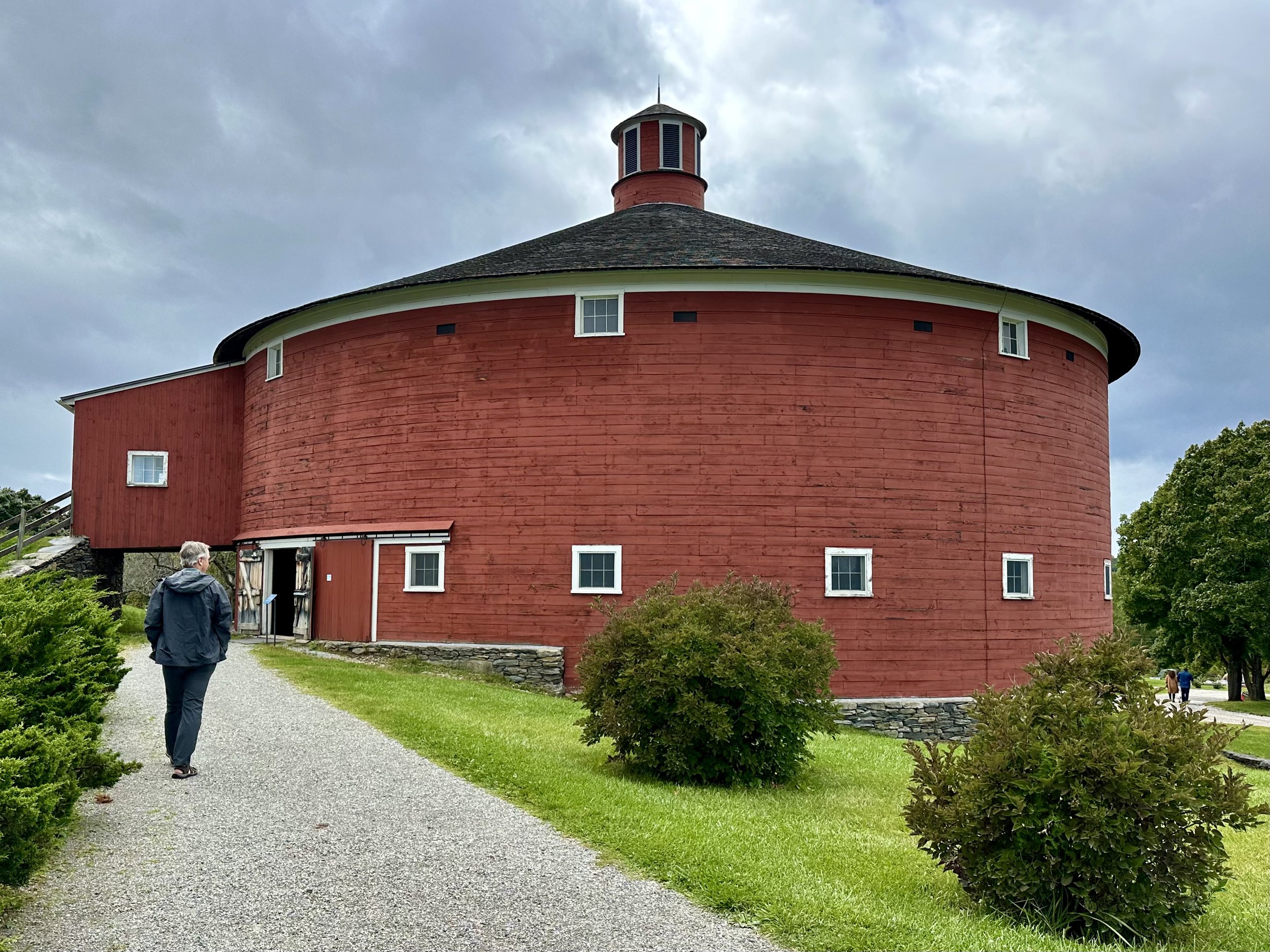
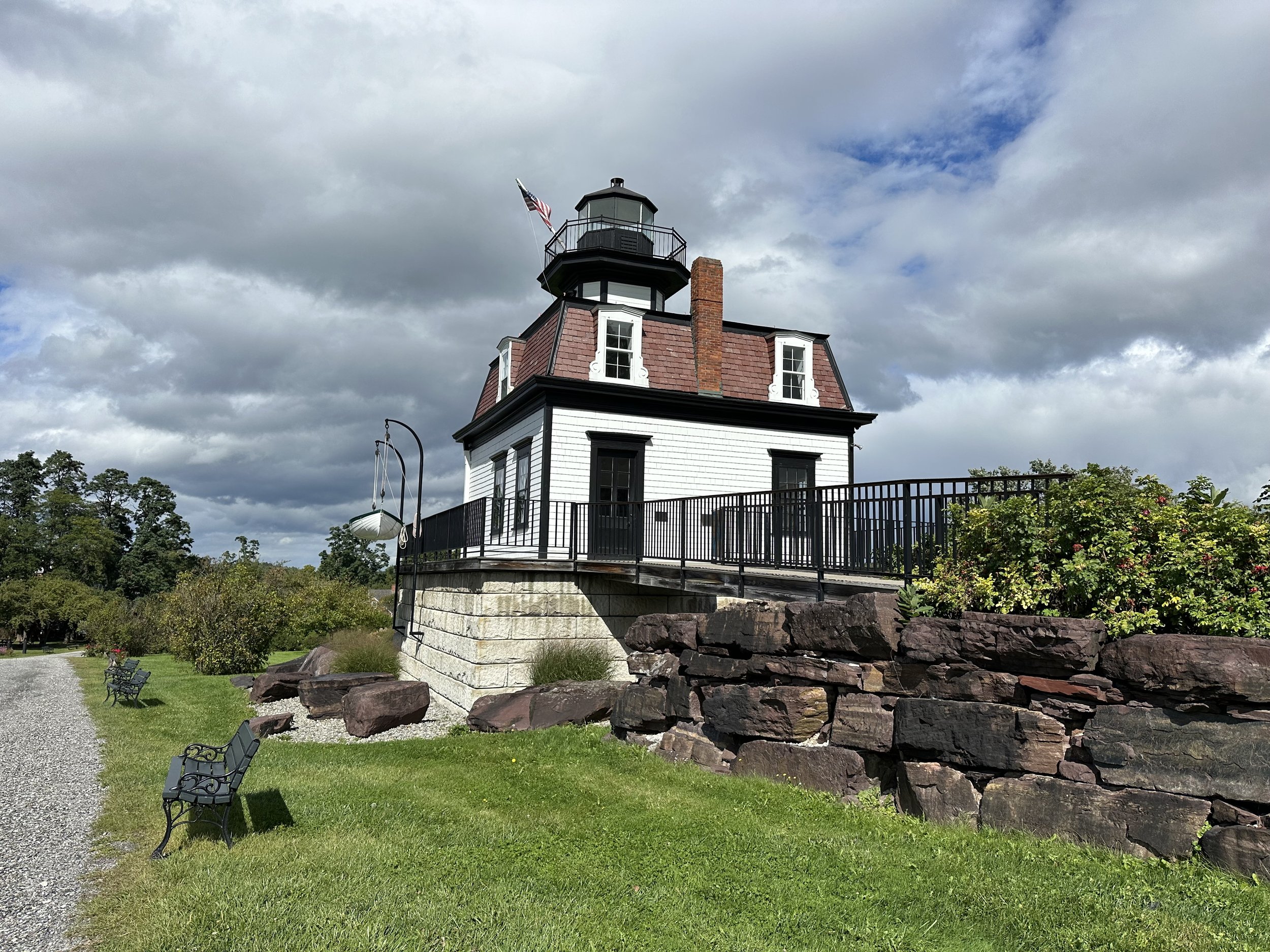
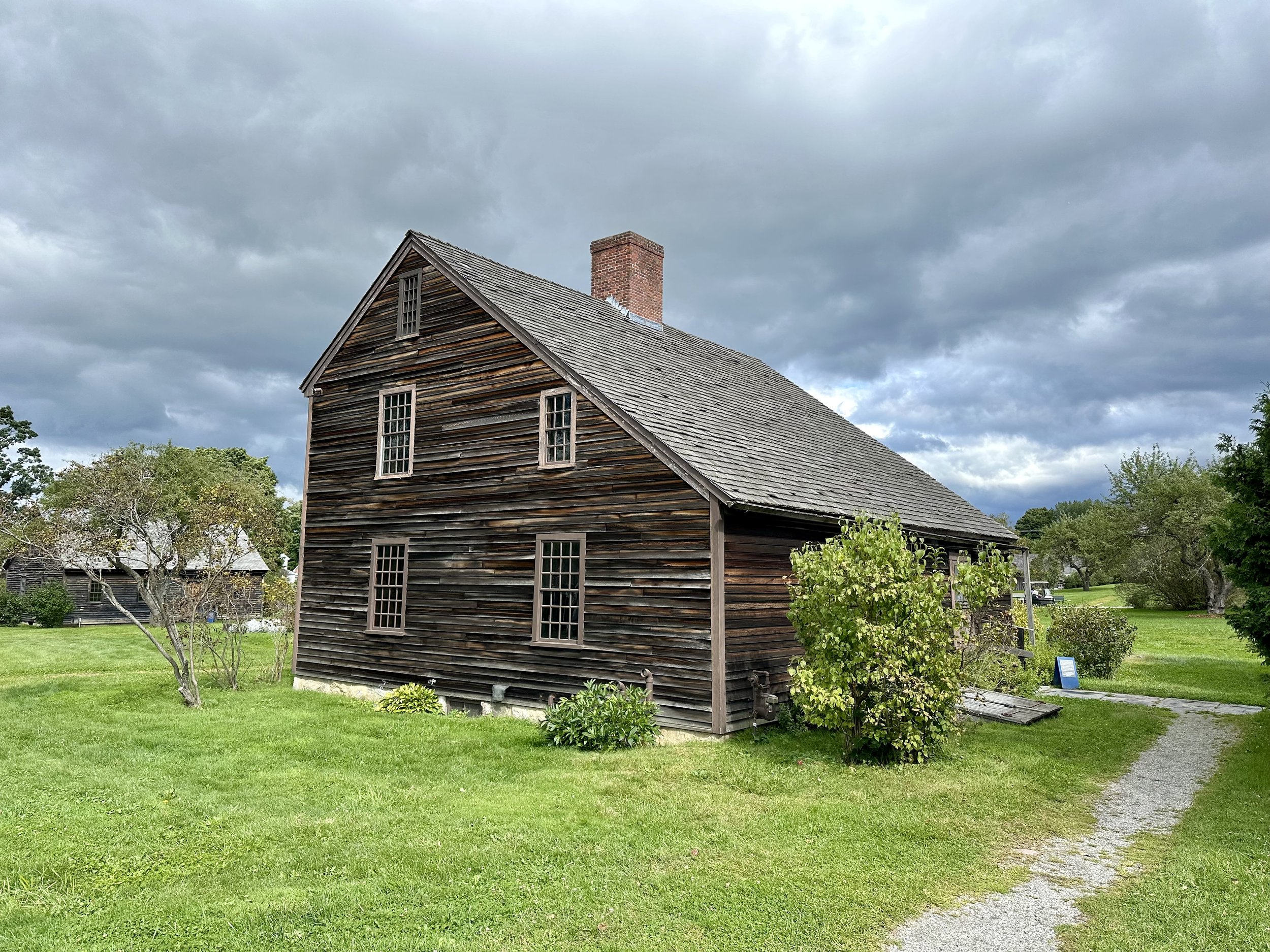
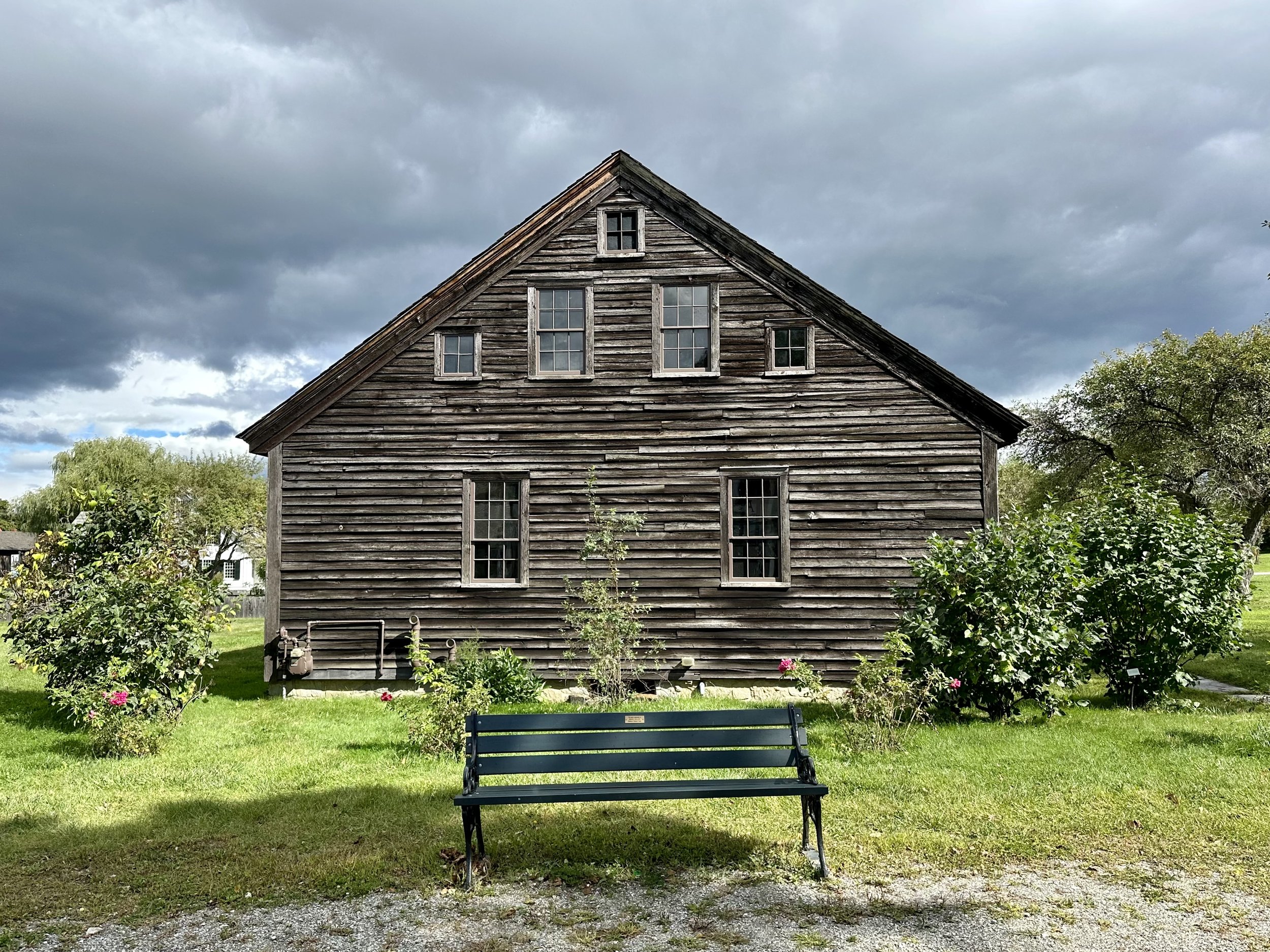
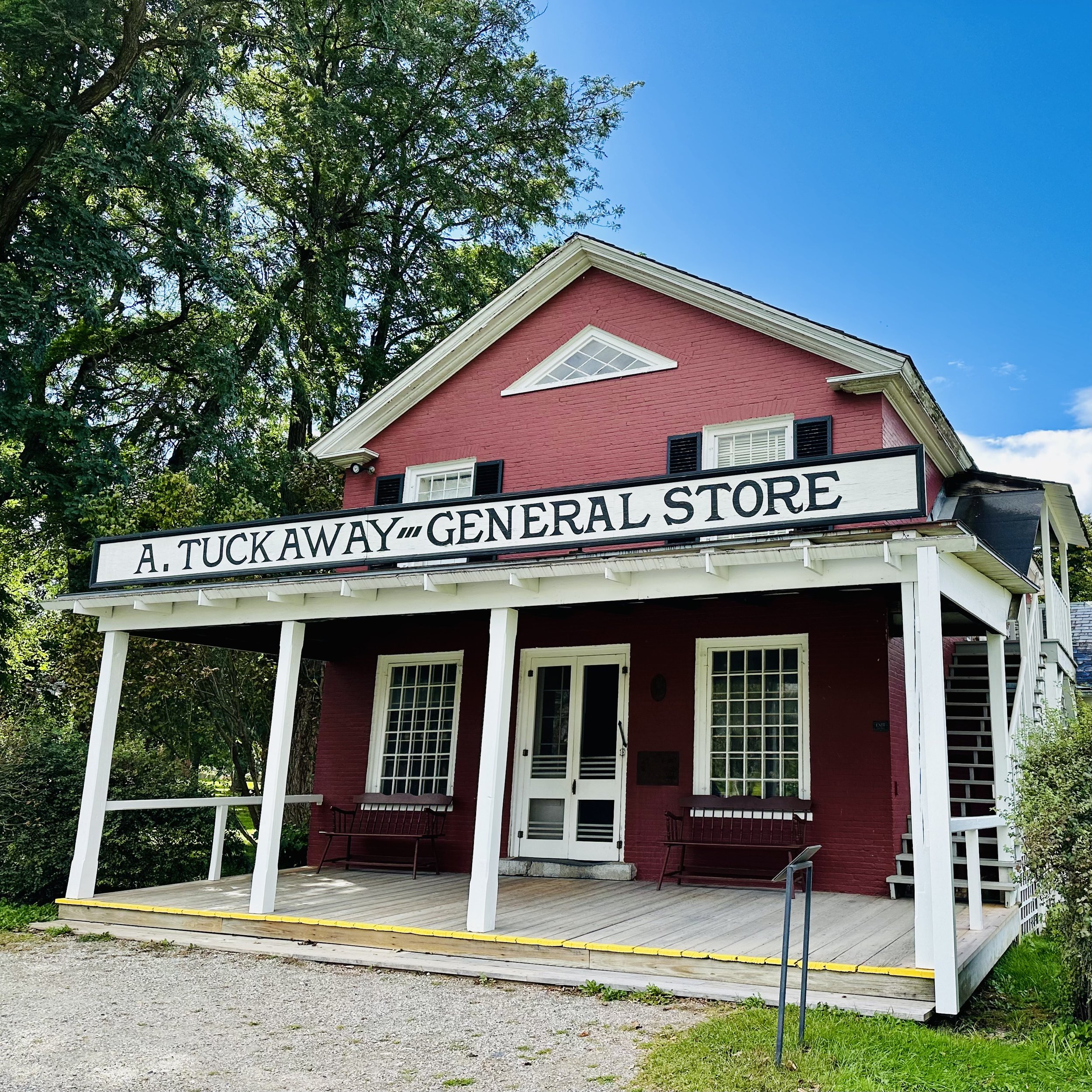

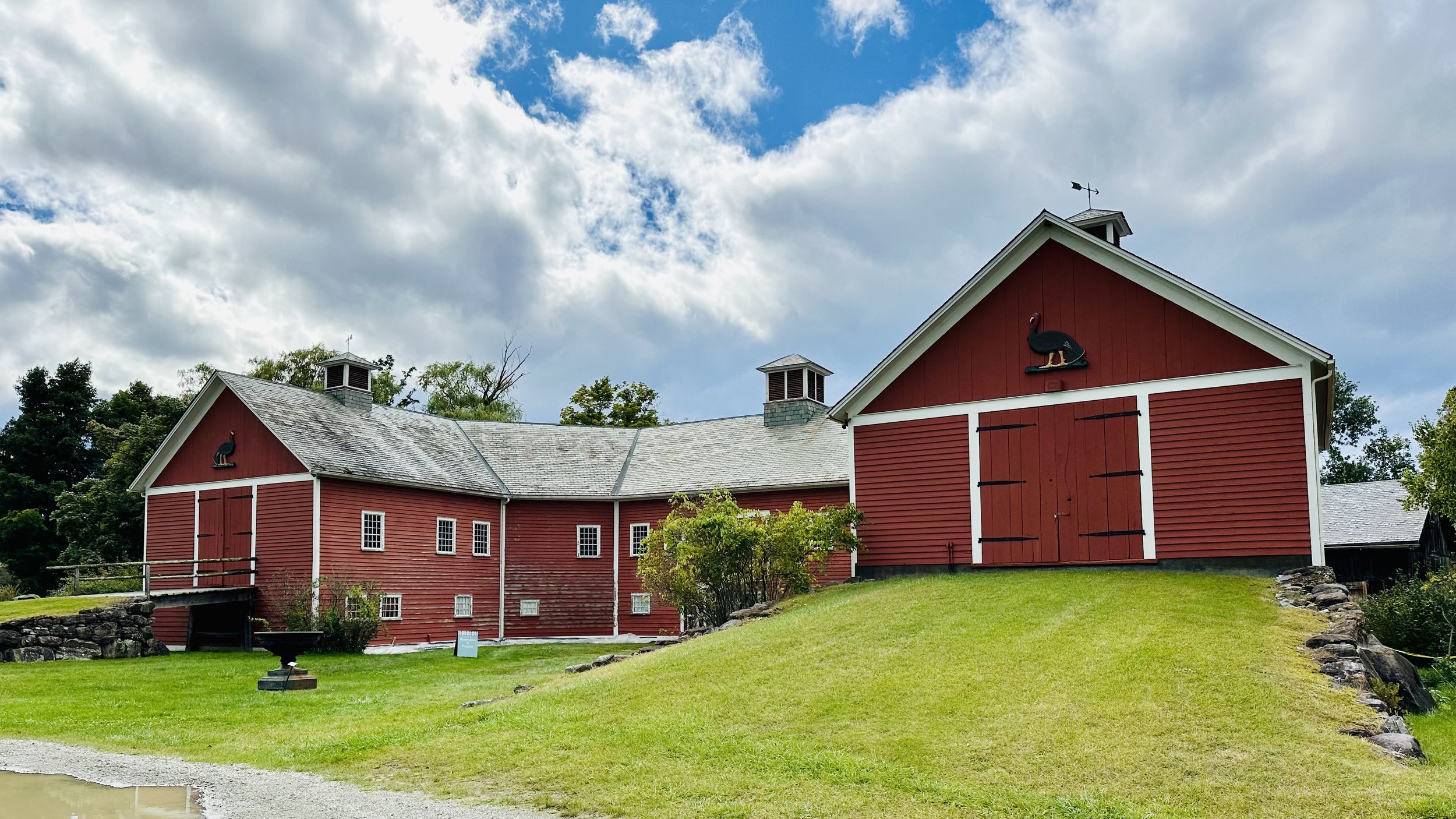
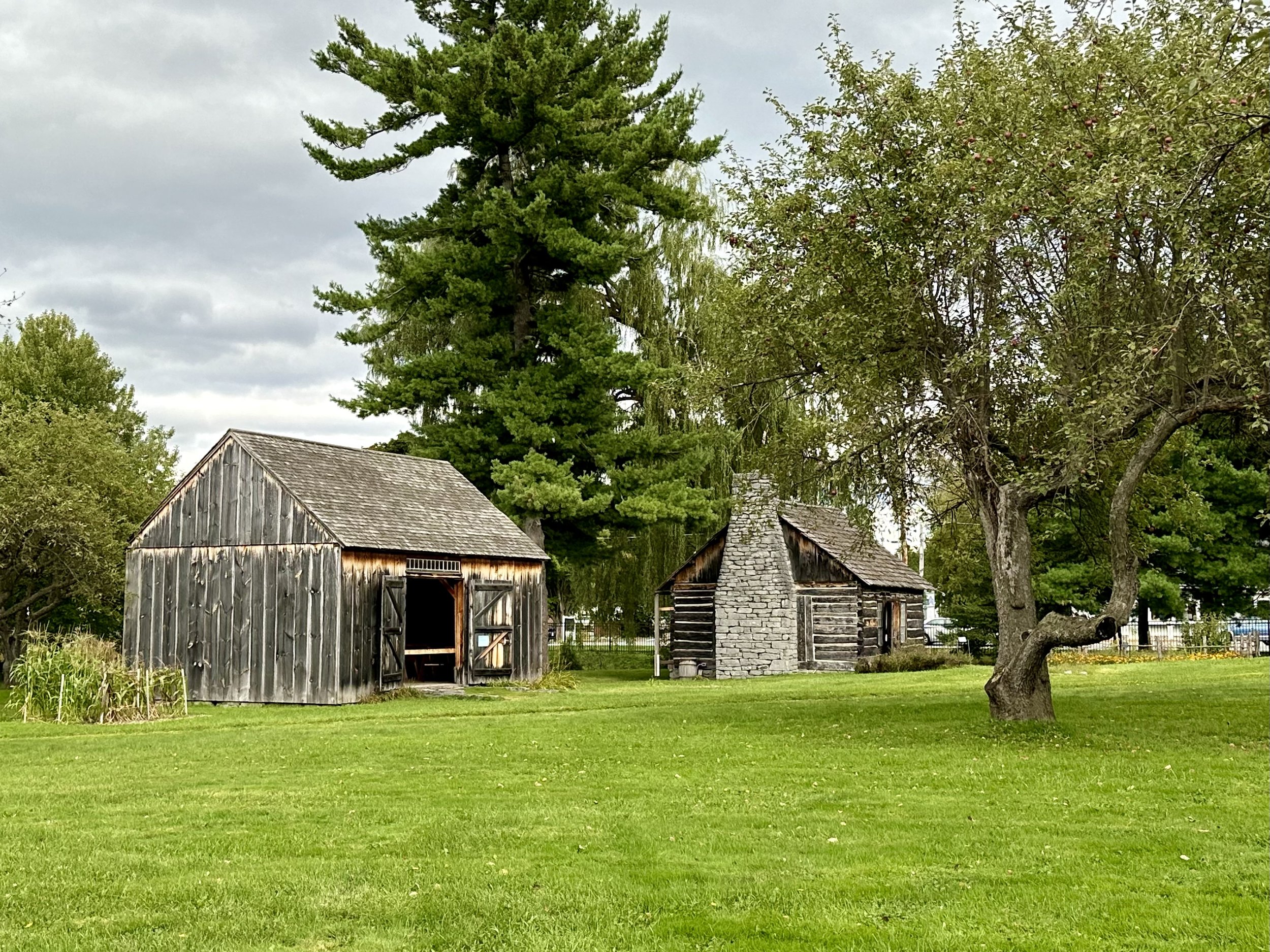
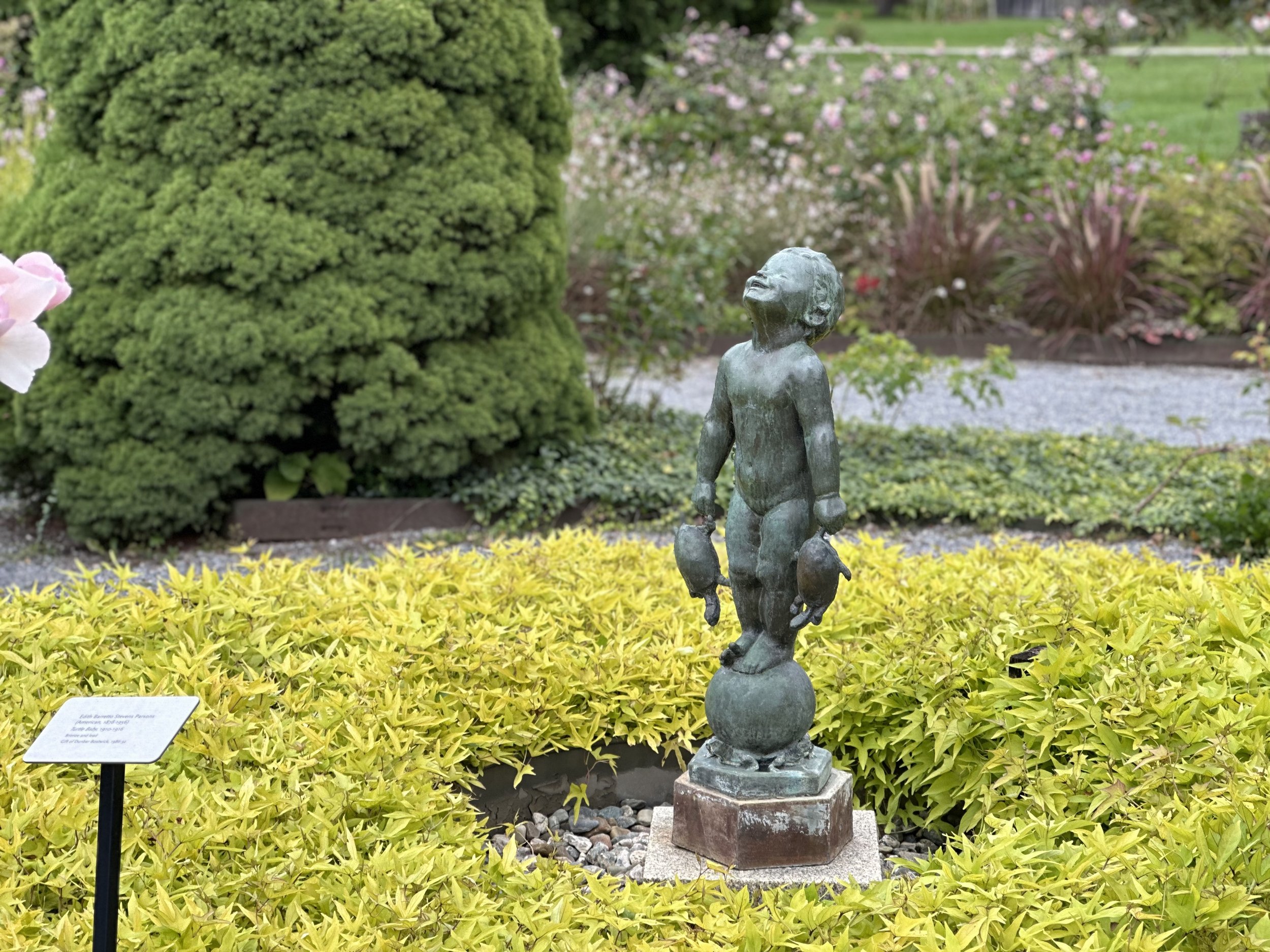
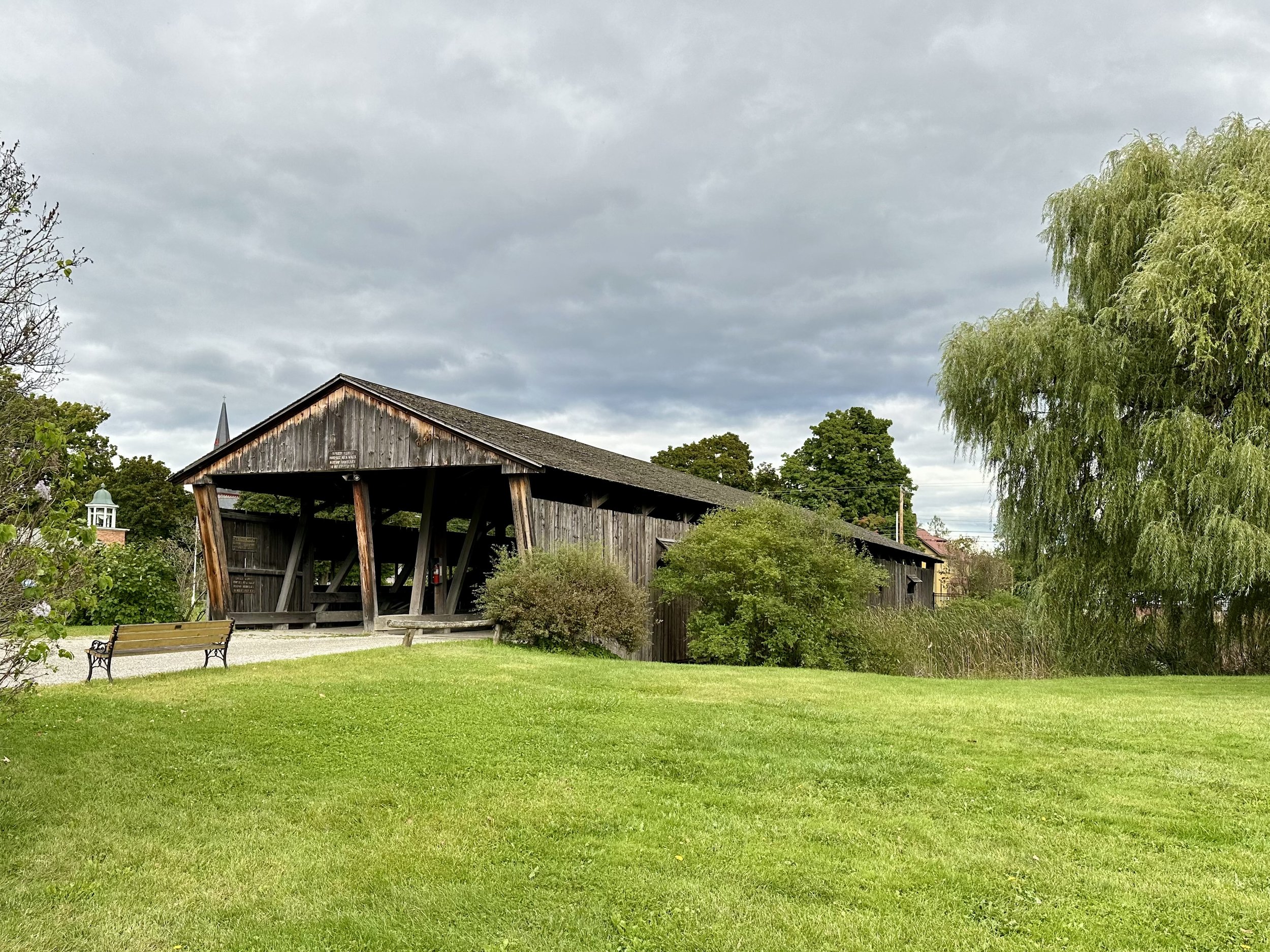
Each building housed a special collection or exhibit. The barns displayed a fascinating array of horse-drawn vehicles.
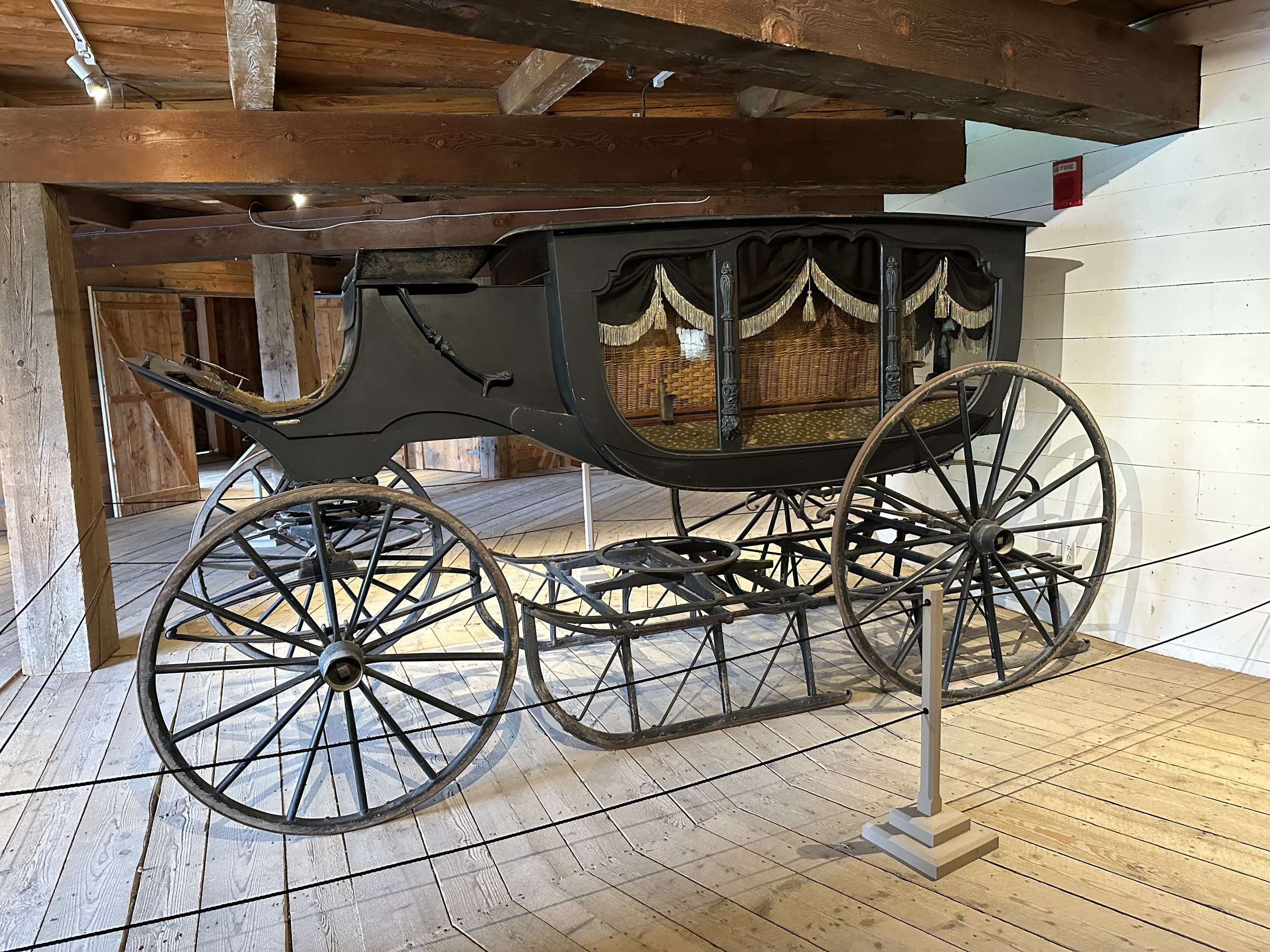
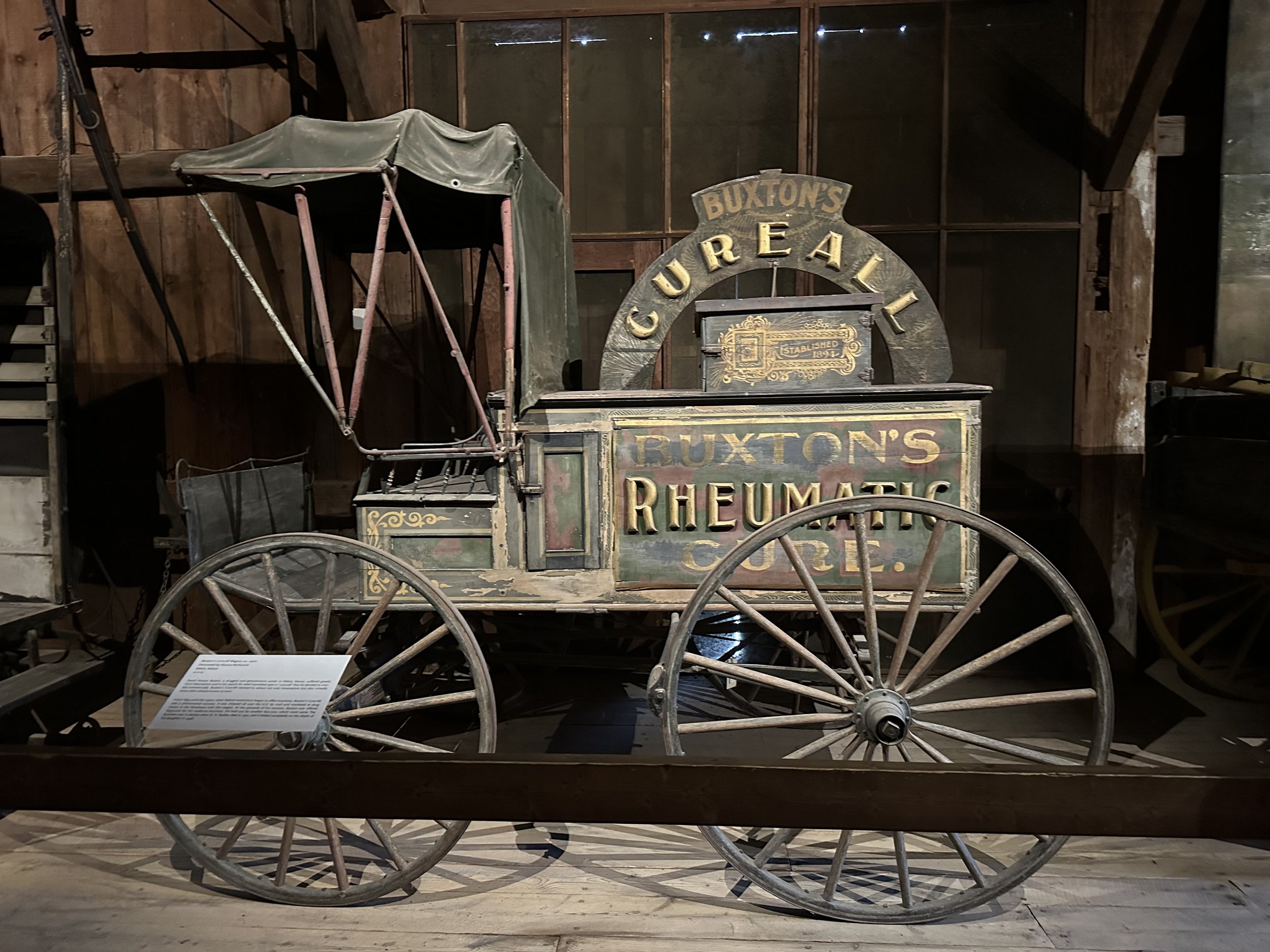
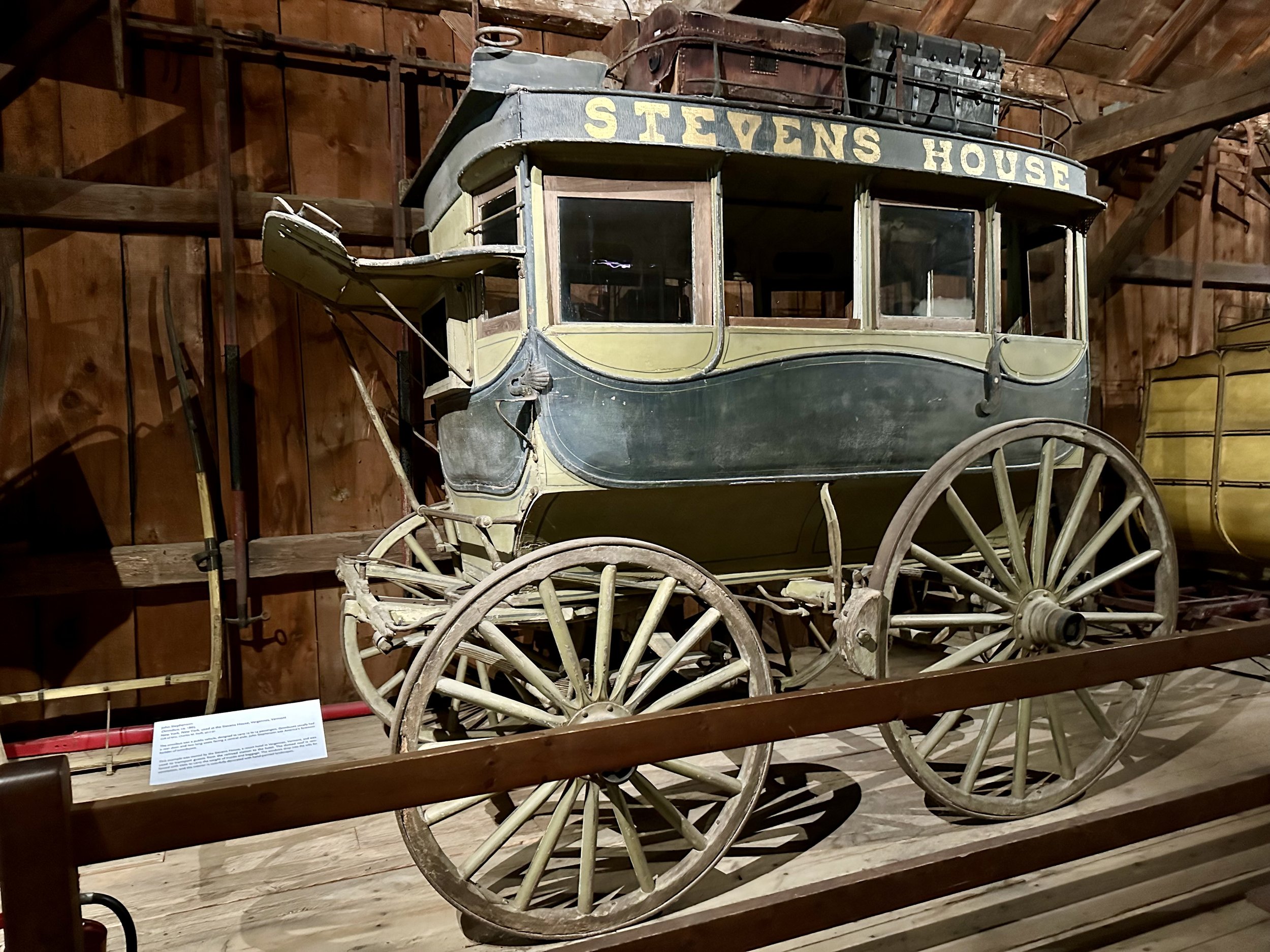
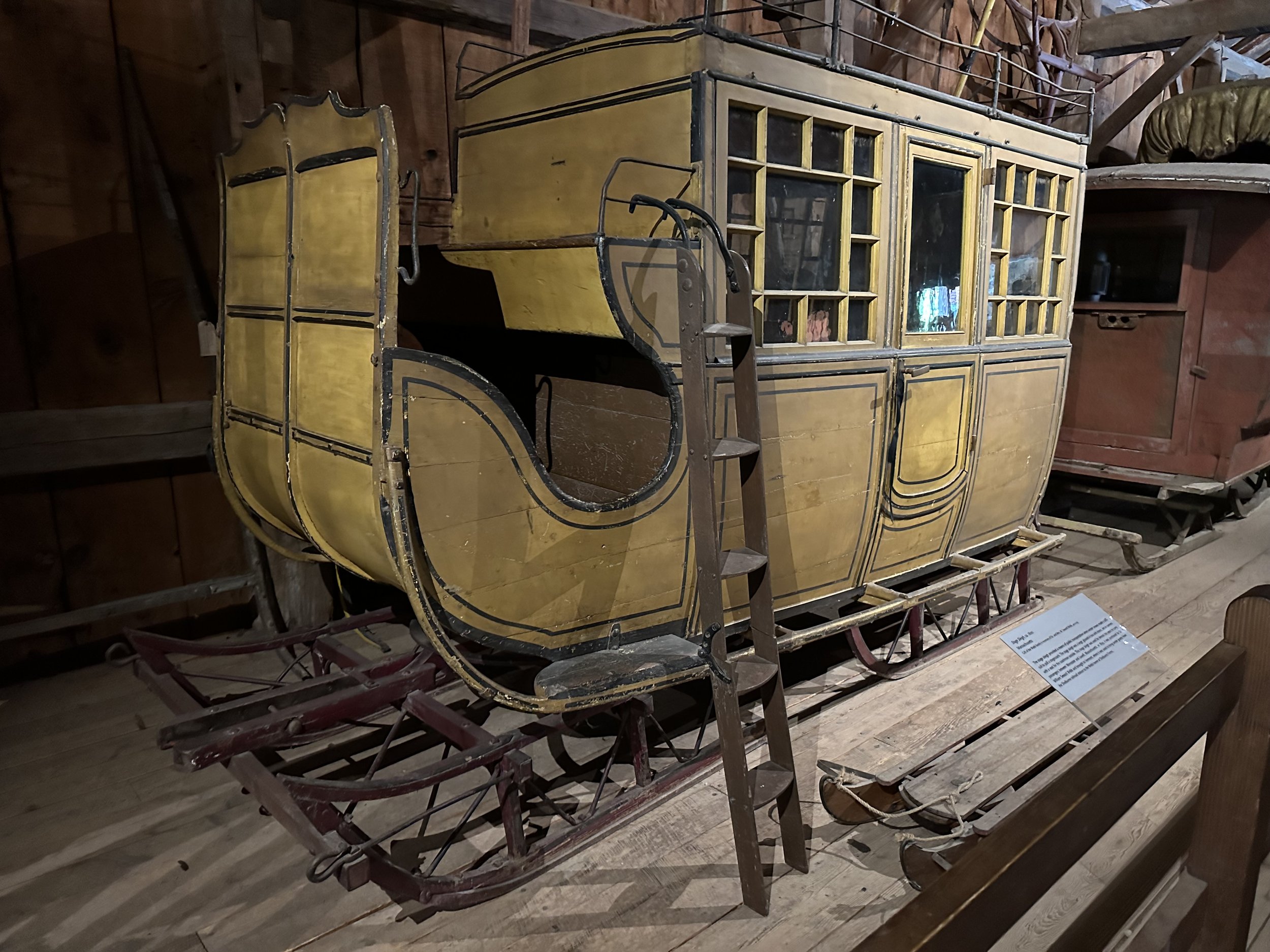
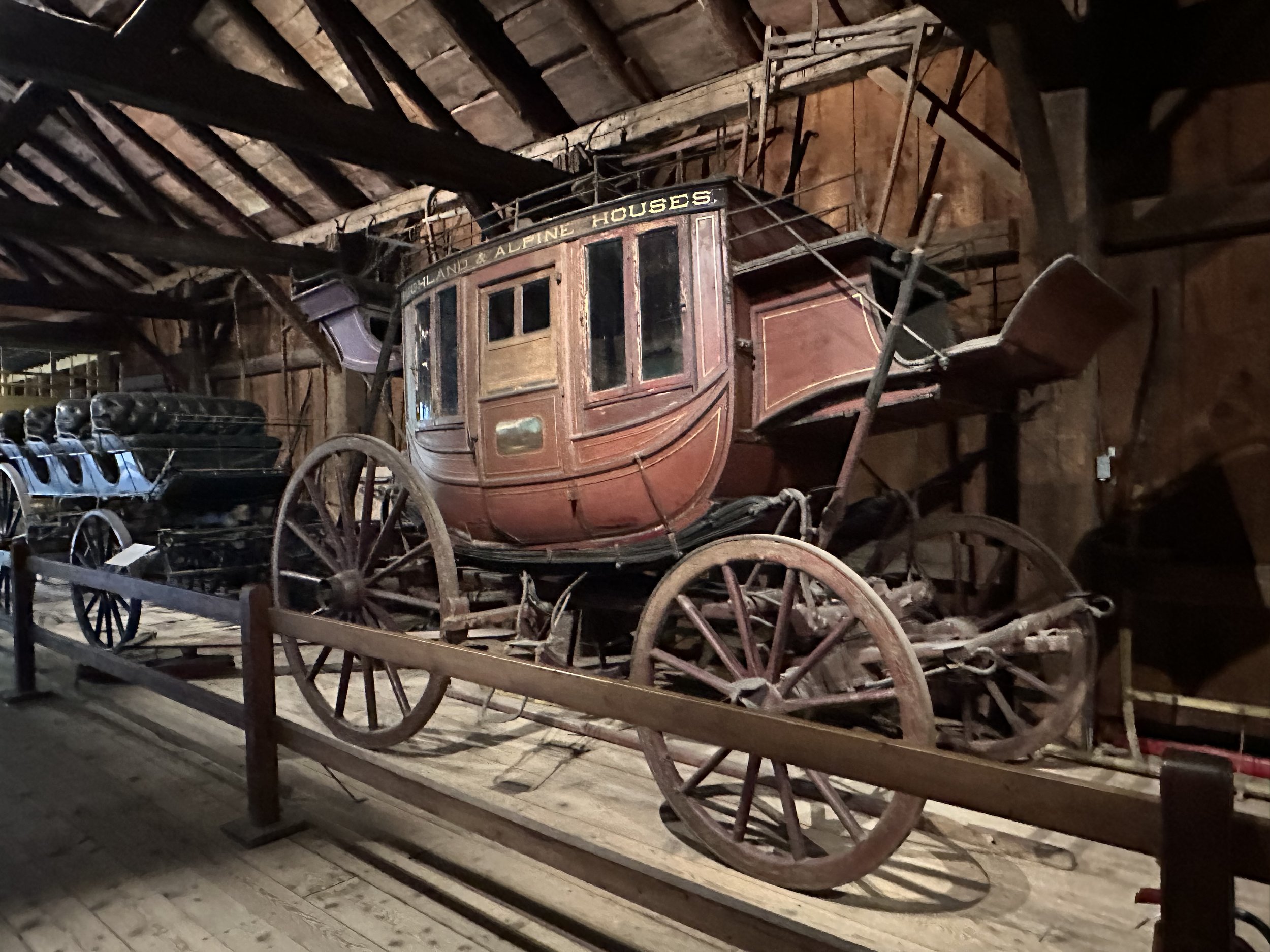
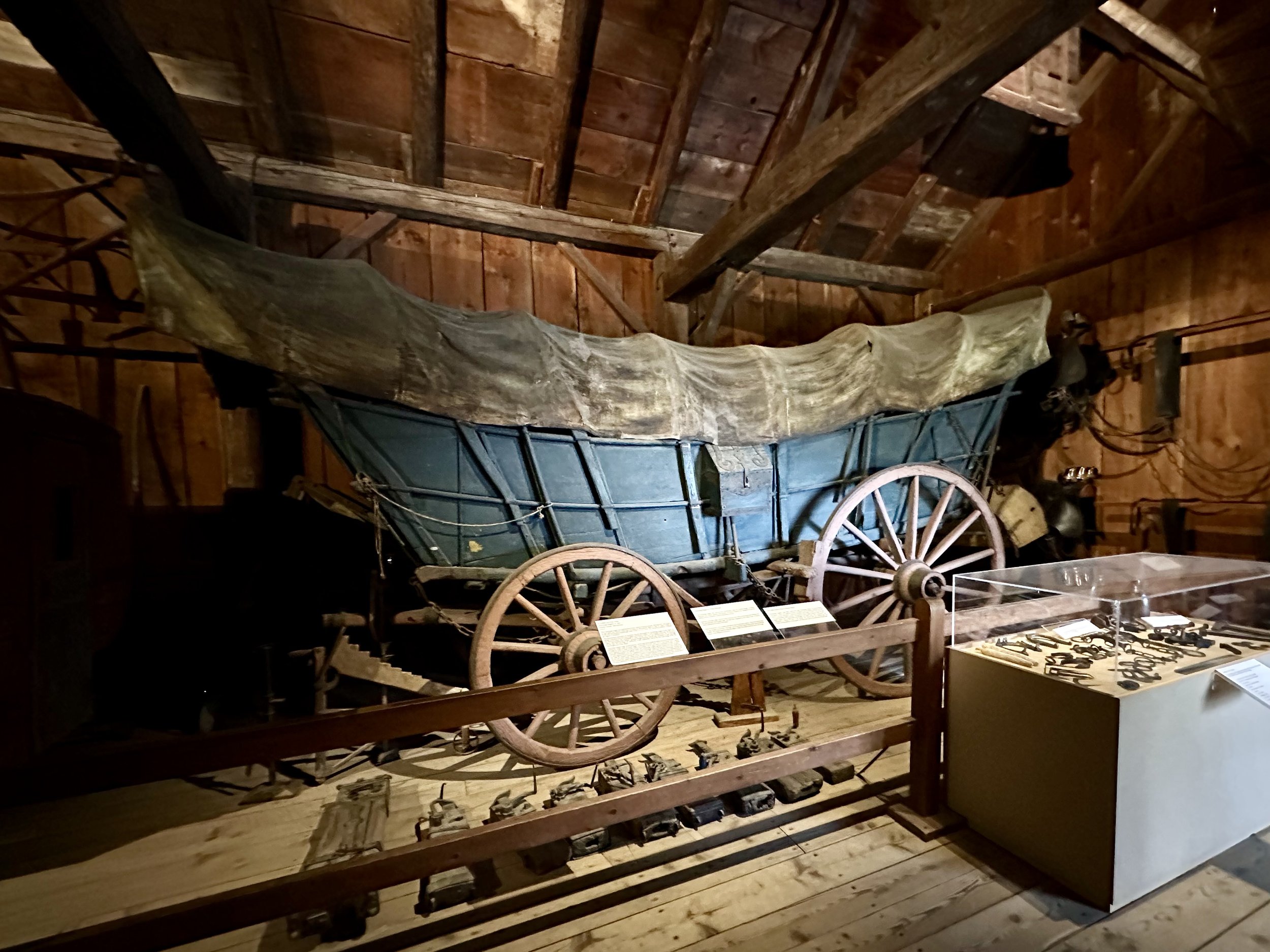
It was fun to discover what each house had in store. One was a gallery of 19th-century paintings by prominent American artists; another held an exhibit of felted wool landscapes by a contemporary Canadian fiber artist. We saw collections of hatboxes, quilts, miniature dolls, glass canes, iron trivets, pewter vessels, and transferware china.
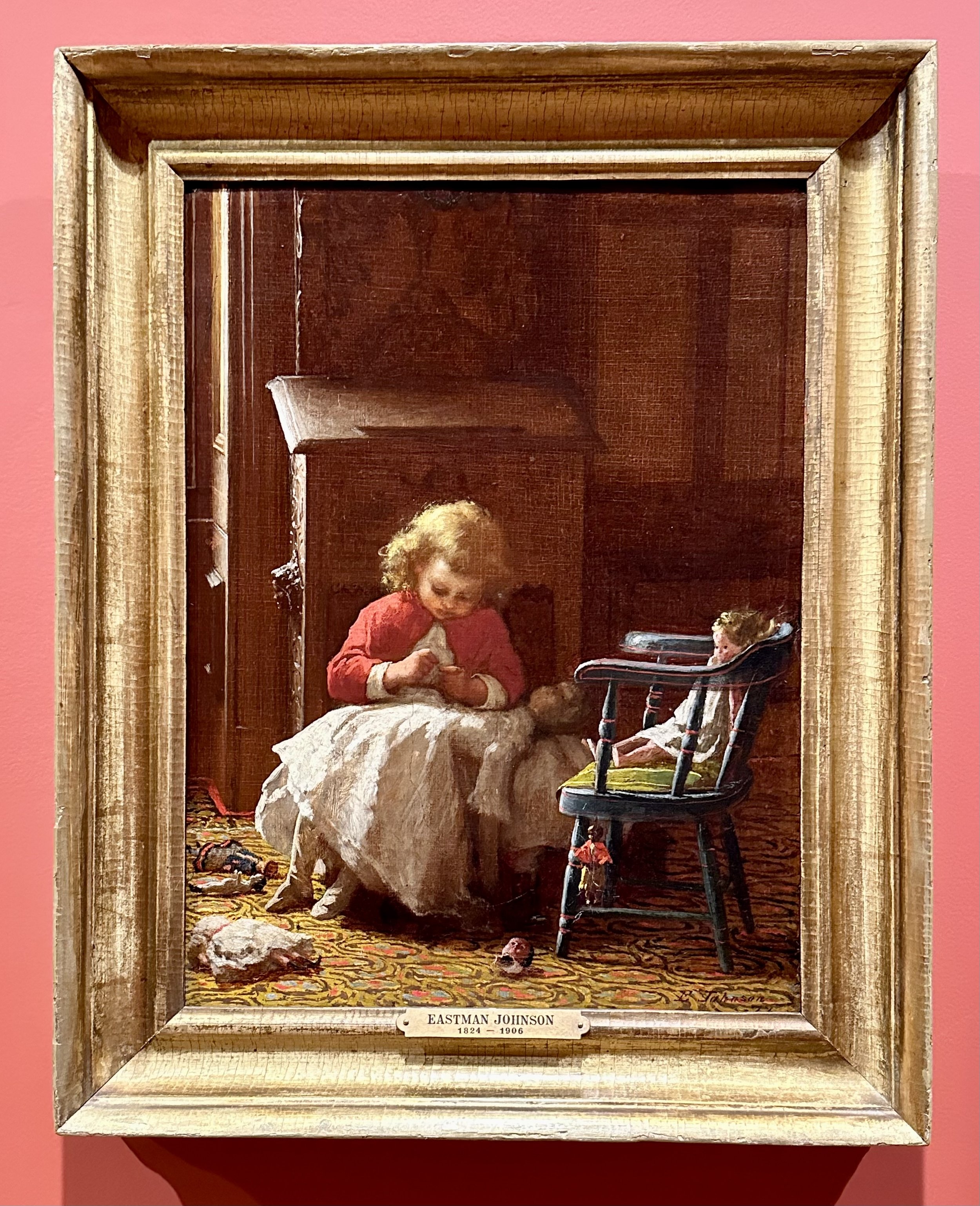
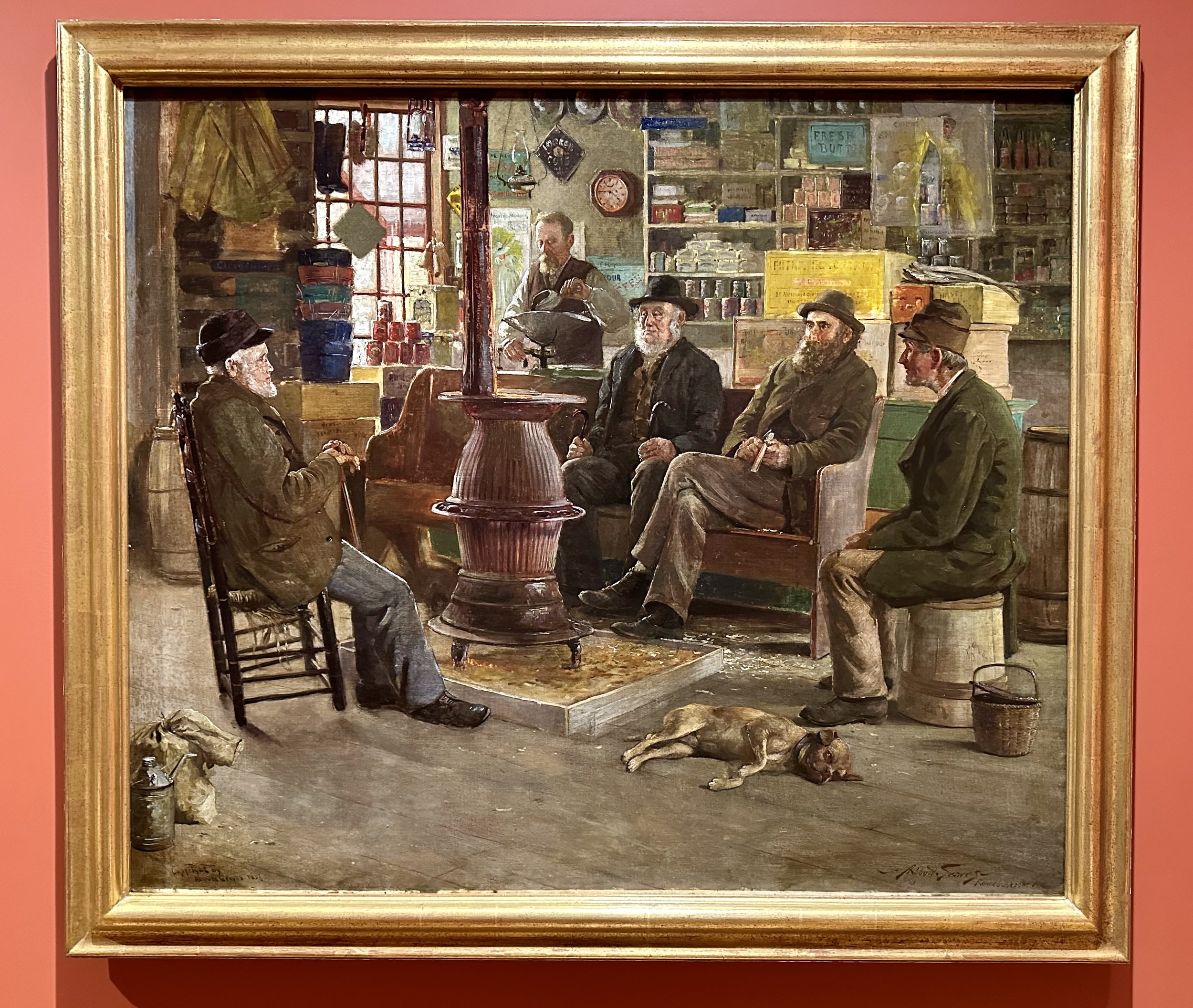
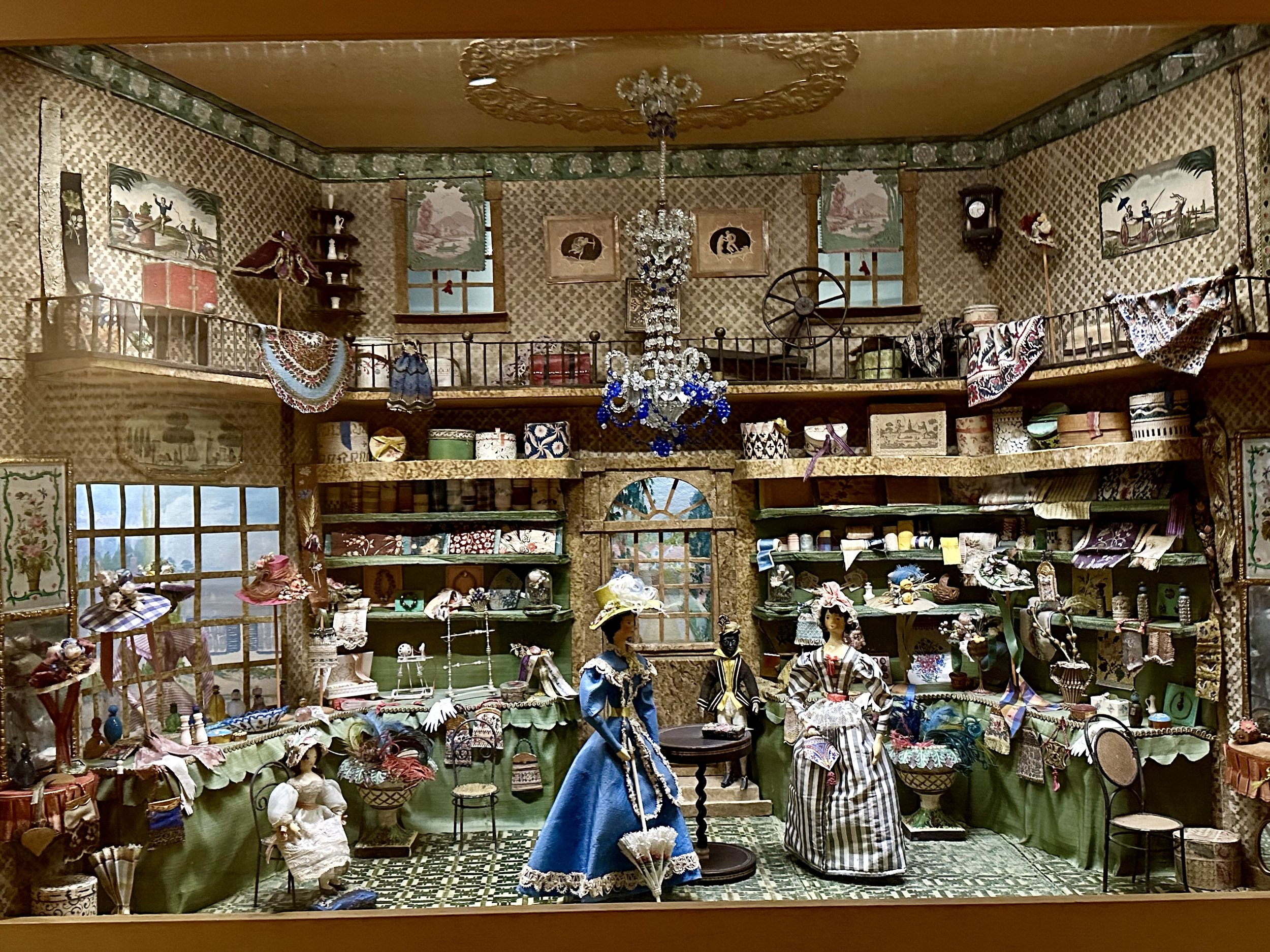
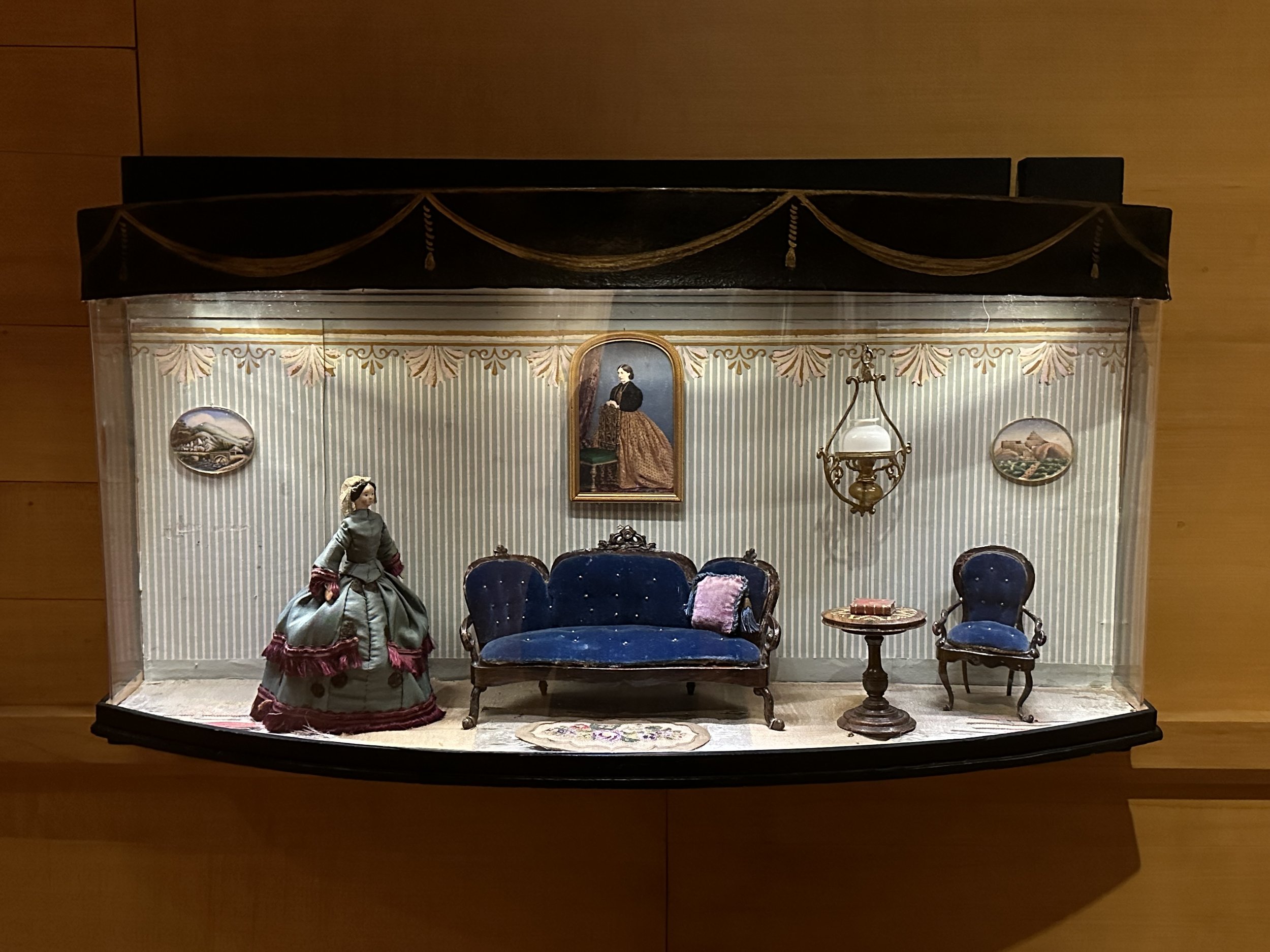
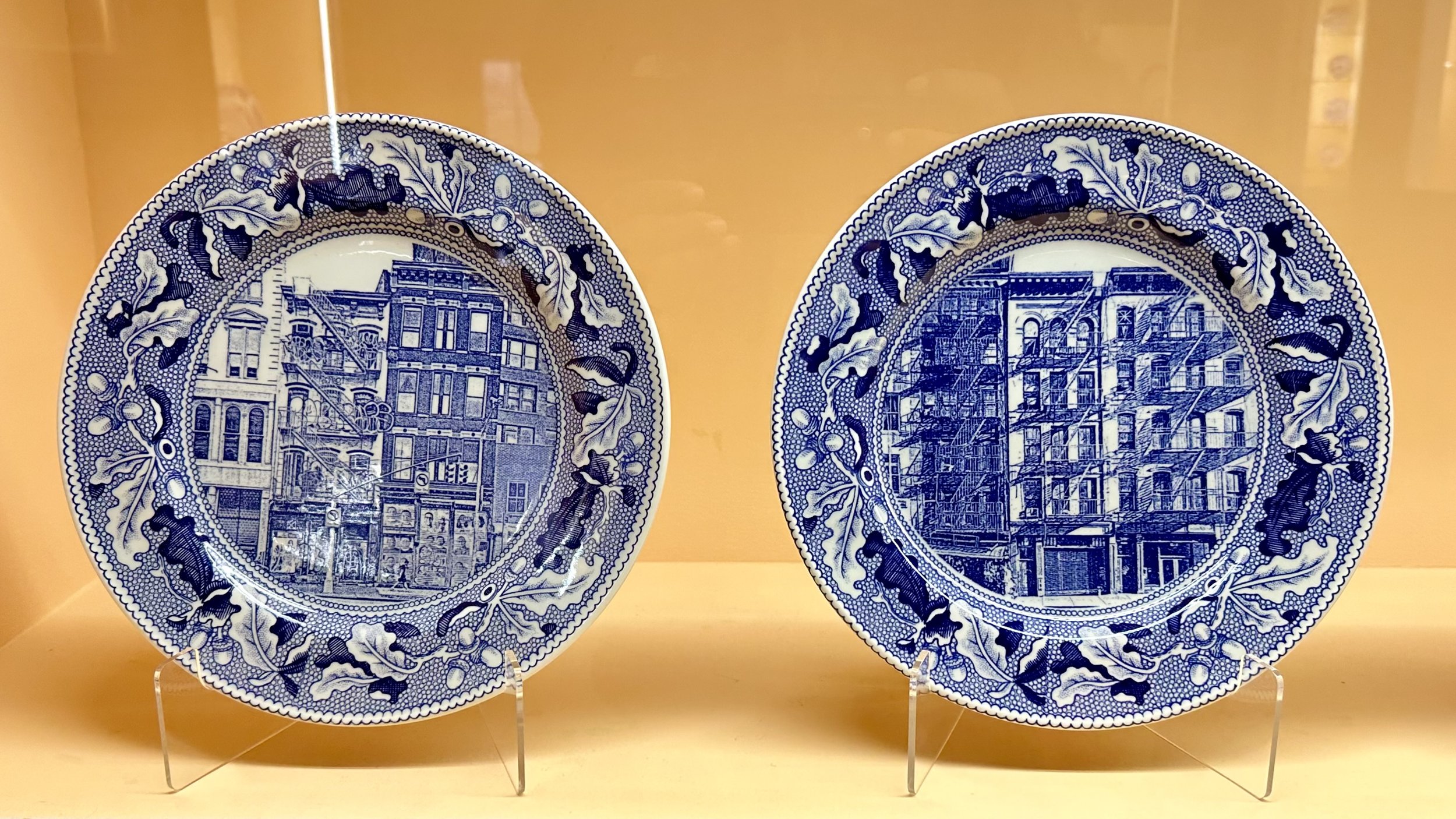
I’m sure we saw just a fraction of the objects the museum had on display. It was easy to appreciate why one admission was good for two days. For anyone interested in 18th and 19th century American art and history, especially in New England, the Shelburne Museum offers a rich, diverse, and one-of-a-kind experience.
Admission to the Shelburne Museum is free with the appropriate level of membership in a NARM institution.